

World’s First LNG-Fueled Car Carrier Receives ‘AFVC’ Notations For Safe EV Transport

Somalia Mandates Vessels To Fly National Flag Under New Maritime Regulations

India Begins Construction Of Its Largest Deep-Water Port In Maharashtra’s Palghar

Houthis Launch Missile Attack On 2 Crude Oil Tankers In The Red Sea

The Biggest Cruising Sailing Trimaran in the World
The world premier presentation of a giant trimaran, a project by Monegasque company UltraLuxum, was recently done at Monaco Yacht Show (21 to 24 September 2011).
Constructed in carbon fiber and fitted with retractable floats, the UltraLuxum CXL harnesses the very best of 21st-century technology. She is luxurious, inhabitable and ecological. The project is sponsored by the Monaco Yacht Club, involved on behalf of the Albert II Foundation and its Wood Forever program.
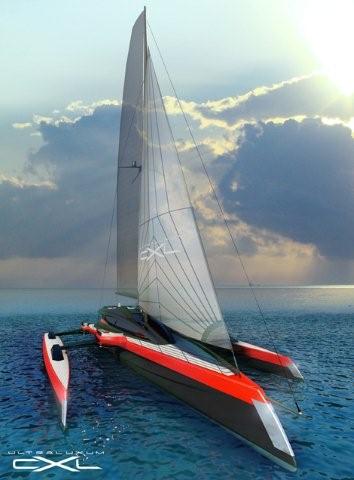
On 23 September 2011, during the Monaco Yacht Show, the UltraLuxum CXL project will be unveiled at the Monaco Yacht Club, the project’s official sponsor. With her 48 meters in length and entirely constructed in carbon fibre body weighing a total of 110 tons, she is the biggest cruising trimaran in the world.
Furthermore, the giant will have a mast measuring 55 meters in height, suitable for approximately 1200m² of total sailing area. This should easily enable to navigate at a speed of between 20 and 25 knots under sail, affording passengers a perfectly comfortable ride.
The engines that are envisaged being diesel-electric will reach very comfortable speeds (approximately 15 knots) whilst consuming 40% less than a monohull of the same size.
Compared with a super yacht of the same length, the space available inside the trimaran is enormous. It can therefore be fitted out more completely for longer stays on board. For example, each of its three cabins has an en suite head.
There is also a spacious dining room, a lounge area, a flat-screen TV, an audio/video system on demand and Wi-Fi, a solarium with Jacuzzi on the fly bridge, and equipment for diving and other nautical activities. Swarovski, one of the project’s official suppliers, will ensure an innovative approach to the interior design, incorporating crystals and unique lighting features.
The furniture inside the yacht will be unique as custom made with some removable elements. Furthermore, the trimaran’s huge garage will house a supercar that is delivered with the boat; the brand of the vehicle will be revealed at the project’s launch.
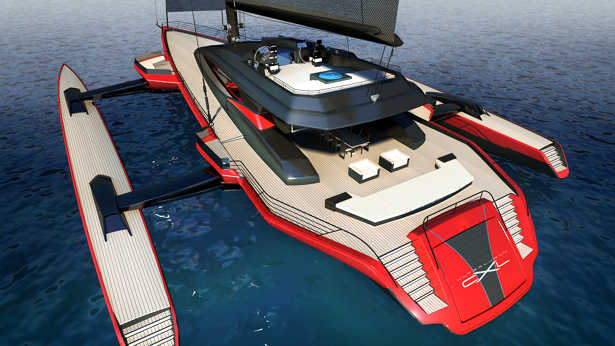
Finally, the trimaran will be constructed in compliance with the requirements of operation Wood Forever, launched by the Albert II Foundation. The wood used will comply with the program’s standards.
The boat’s retractable fl oats constitute the biggest technological challenge of that project. Once tucked in (port configuration), they reduce the width of the yacht from 23 to 11 meters, which is extremely practical when seeking a berth in a port! The space inside each fl oat will be used to fit out spare cabins plus a huge technical area.
Disclaimer : The information contained in this website is for general information purposes only. While we endeavour to keep the information up to date and correct, we make no representations or warranties of any kind, express or implied, about the completeness, accuracy, reliability, suitability or availability with respect to the website or the information, products, services, or related graphics contained on the website for any purpose. Any reliance you place on such information is therefore strictly at your own risk.
In no event will we be liable for any loss or damage including without limitation, indirect or consequential loss or damage, or any loss or damage whatsoever arising from loss of data or profits arising out of, or in connection with, the use of this website.

About Author
Marine Insight News Network is a premier source for up-to-date, comprehensive, and insightful coverage of the maritime industry. Dedicated to offering the latest news, trends, and analyses in shipping, marine technology, regulations, and global maritime affairs, Marine Insight News Network prides itself on delivering accurate, engaging, and relevant information.

Read More Articles By This Author >
Do you have info to share with us ? Suggest a correction
Daily Maritime News, Straight To Your Inbox
Sign Up To Get Daily Newsletters
Join over 60k+ people who read our daily newsletters
By subscribing, you agree to our Privacy Policy and may receive occasional deal communications; you can unsubscribe anytime.

BE THE FIRST TO COMMENT
One comment.
Thanks for this article! I’m Student at Naval Arhitecture and your website realy help me, with many information in our domain of activity. Sorry for my english skills, I try to improve it!
Leave a Reply
Your email address will not be published. Required fields are marked *
Subscribe to Marine Insight Daily Newsletter
" * " indicates required fields
Marine Engineering
Marine Engine Air Compressor Marine Boiler Oily Water Separator Marine Electrical Ship Generator Ship Stabilizer
Nautical Science
Mooring Bridge Watchkeeping Ship Manoeuvring Nautical Charts Anchoring Nautical Equipment Shipboard Guidelines
Explore
Free Maritime eBooks Premium Maritime eBooks Marine Safety Financial Planning Marine Careers Maritime Law Ship Dry Dock
Shipping News Maritime Reports Videos Maritime Piracy Offshore Safety Of Life At Sea (SOLAS) MARPOL
- AROUND THE SAILING WORLD
- BOAT OF THE YEAR
- Email Newsletters
- America’s Cup
- St. Petersburg
- Caribbean Championship
- Boating Safety
- Ultimate Boat Giveaway

2024 Boat of the Year Best Trimaran: Dragonfly 40 Ultimate
- By Dave Reed
- December 20, 2023
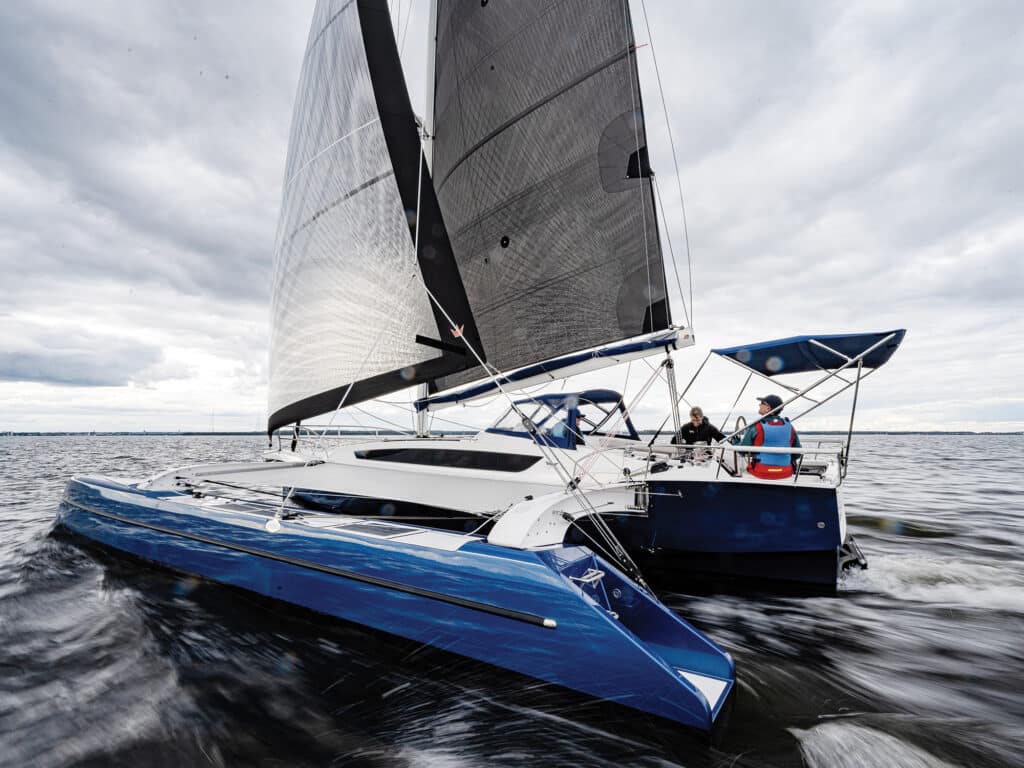
“Classy.” That was the first word that came to mind for Boat of the Year judge Mike Ingham when he stepped aboard the formidable 40-foot trimaran from Dragonfly, an unexpected and welcome late entry to the competition in Annapolis. “It almost feels as if the boat is intentionally understated but overdelivered because once you start looking closer at the details and craftsmanship, it just keeps getting more impressive.”
Builder and company owner Jens Quorning, whose family has been building trimarans in southern Denmark since 1967, says the Dragonfly 40 is the biggest boat they now build and a worthy holder of the flagship title. “Building a boat of this scale is complicated,” he says of the folding trimaran. “It takes three years to develop a new design, and this is for owners looking for a bigger boat, with better performance, capable of more long-distance sailing.”
The result is a powerful trimaran aimed at experienced owners who appreciate the sheer pleasure of racing and cruising on three hulls. This is not your average production multihull. It is a powerful and luxurious sailing machine capable of knocking off fast miles in comfort. Slip down below and you’re immediately immersed in a master class of woodwork and joinery. There are berths for four, including a giant master under the cockpit, plenty of standing headroom, and a comfortable salon and galley arrangement that’s monohull-cozy. “We do not offer a big house on the water,” Quorning tells the judges. “But if you really want a fine and elegant yacht with double-digit sailing, this is what we do.”
For our tests, Dragonfly presented its Ultimate edition, the midrange version. An upscaled Performance model is an all-carbon version with a taller mast. And in the lightest wind of the week, sub-10 knots, the trimaran teased the judges with its potential. Still, in the light stuff, the boat delivered a winning experience.
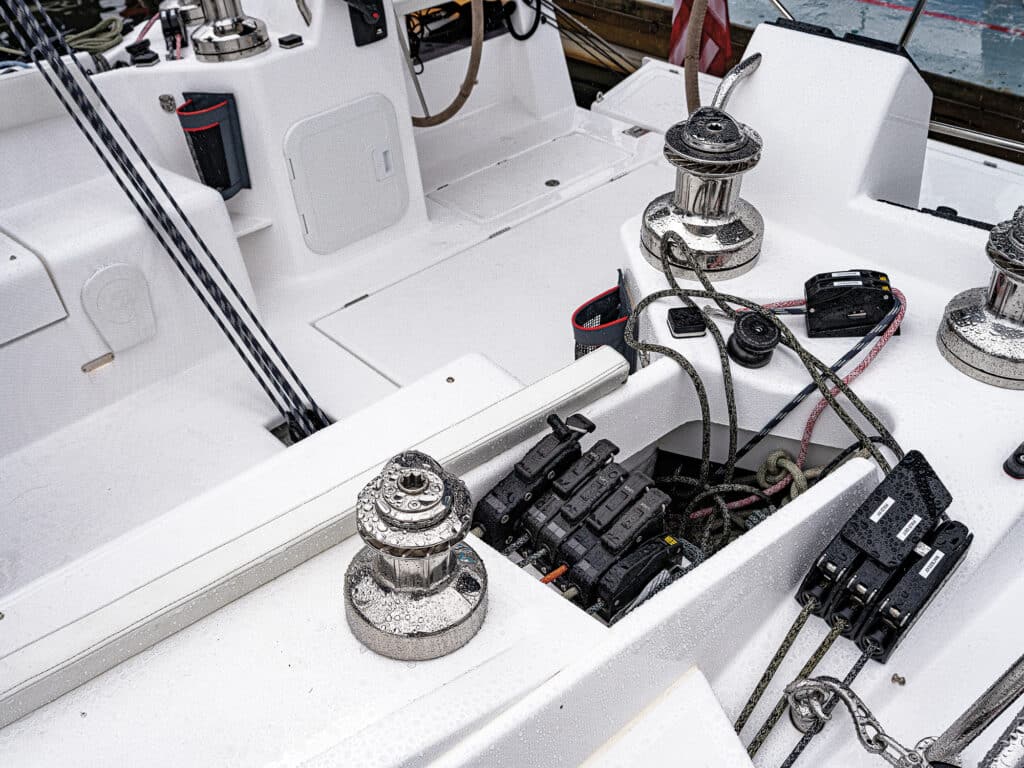
“It was a dream to sail upwind and downwind, almost effortlessly,” Ingham says. “With the gennaker up, at about 100 degrees true, we were going faster than the wind, and with winch pods on each side of the steering wheel, everything was as ergonomic as you could possibly imagine. The electric winches made it a cinch to furl and unfurl the headsails through the tacks and jibes, and the sails trimmed in perfectly every time.”
The feather-light feel of the helm, Ingham adds, was as smooth as a balanced dinghy. “With tiny movements on the wheel, the boat would immediately respond, but I could also walk away from the helm for a few minutes and the boat would stay right on track. Crazy—I think it steered itself better than I did.”
That’s the trait of a good trimaran, Greg Stewart says. The Dragonfly 40 has a lot of buoyancy in the bows, and while the center hull is substantial, the tall trussed rig and square top mainsail provide plenty of power. “The biggest thing that struck me is how easily accessible everything is,” Stewart says. “Clearly, every detail is painstakingly thought out, and I can’t believe how beautifully built the interior is. It’s top-notch, from the glasswork to the paintwork inside and out. Down below, we were all blown away by the finish.”
There’s no denying the boat is expensive at upward of $1 million, but the test boat had quality race sails, a full electric-winch package, and a long list of high-spec extras. At nearly 15,000 pounds light, it’s a substantial boat—not trailerable, but foldable with Dragonfly’s trademark technique that Corning describes as mimicking parallel rules. The floats are 2 feet longer than the center hull, with buoyancy pushed well forward into the reversed bows, and the center hull is narrow at the waterline before sweeping upward to a high and hard chine. This pronounced hull shape allows for the generous amount of headroom, and high bench seats that flank a long centerline table, which can, of course, drop down to create a double-size berth.
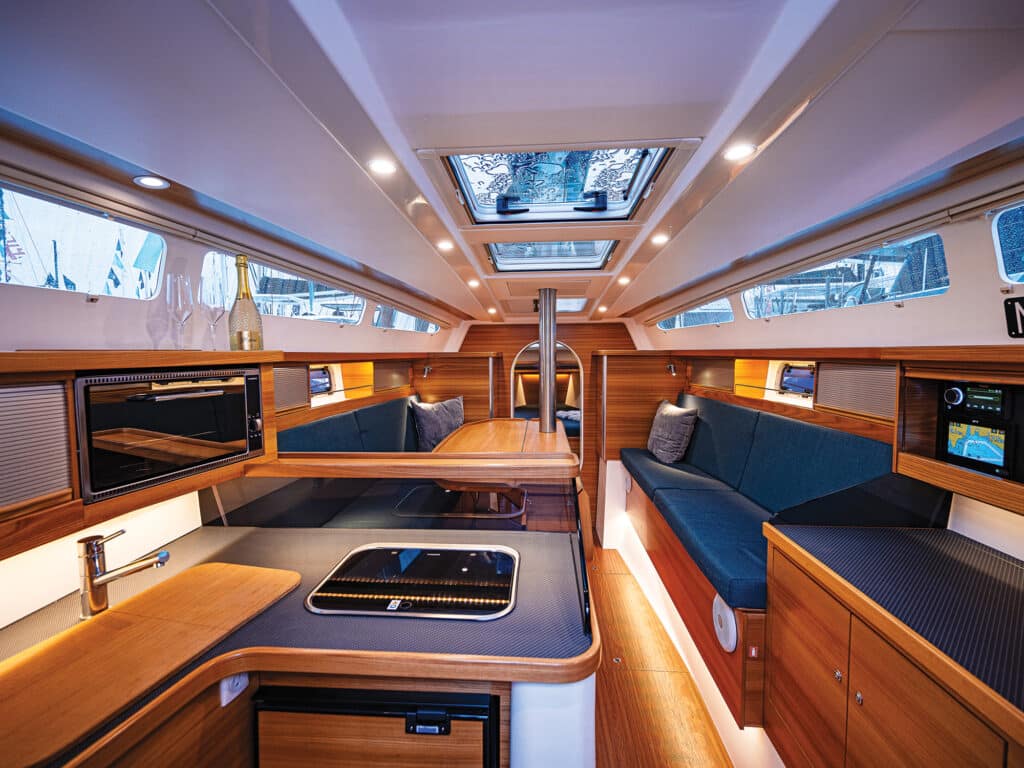
Allen noted that the center hull’s wide side decks provide a secure pathway to the bow, rather than across the trampolines. He was also impressed with the ease of sailing the boat and the comfort belowdecks. “When we were doing 9 knots, I went below and there was silence. It’s comfortable and beautiful. It would be a blast to do some long point-to-point racing on it, doublehanded or with like a crew of four, max.”
Stewart agreed, adding that beyond its noteworthy gunkholing attributes, the engine is well aft on the center hull, allowing it to be motored safely into shallow anchorages. The daggerboard is mechanically raised into the trunk, and the rudder kicks up. “I also think it would be great for a distance race or rally type of event,” Stewart says. “Its performance and versatility are what appeal to me, but the build quality is what really sets it apart.”
- More: 2024 Boat of the Year , Sailboats
- More Sailboats
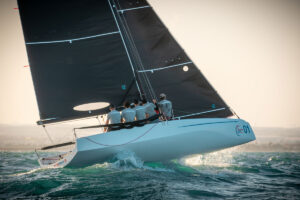
Sporty and Simple is the ClubSwan 28

Nautor Swan Has A New Pocket Rocket

Pogo Launches its Latest Coastal Rocket

A Deeper Dive Into the Storm 18

Mistakes And Misfires On the Final Day of Cup’s Preliminary Regatta

Emirates Team New Zealand Remain the Bullies of Barcelona

Start-Box Sparring in Barcelona on Day 2 of Preliminary Regatta

Real-time Wind Overlay Feature Added to Cup Broadcast

- Digital Edition
- Customer Service
- Privacy Policy
- Terms of Use
- Cruising World
- Sailing World
- Salt Water Sportsman
- Sport Fishing
- Wakeboarding
Prout International starts construction of second Prout PT 138: The World’s largest sailing trimaran
- Inspiration
Related News
Popular news this week, popular news this month, latest news.
- Yacht Charter & Superyacht News >
Written by Chelsea Smith
Prout International has started the construction of their second Prout PT-138 catamaran . Measuring 42.06m, the Prout 138’is the world largest sailing trimaran and the first sailing trimaran super yacht intended for luxury global cruising. The Prout PT-138-02 was infused in early March and construction on both of the world largest sailing trimaran yachts continues.
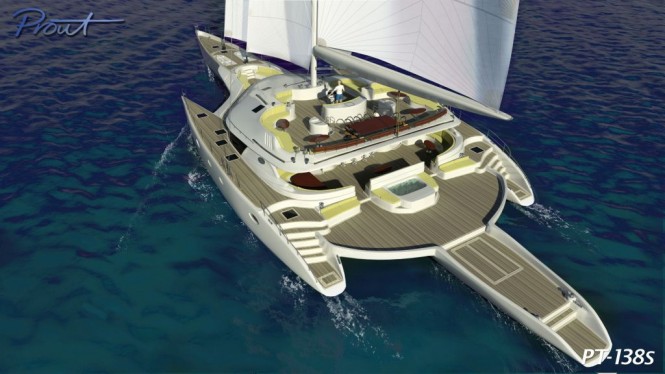
Prout International starts construction of second Prout PT 138 The World’s largest sailing trimaran
After weeks of preparation, it took only 3 hours for the PT-138 hull 02 to be completely infused. The advanced construction method of composite G.R.P. with carbon fiber reinforcements is believed to be the largest single piece epoxy infusion in the world and was completed at the factory in China under the auspices of RINA.
The Prout design PT138 is fitted with a Caterpillar C-12 on the center hull and Steyr Hybrid diesel engines fitted on the port and starboard wing hulls. The vessel achieves a cruising speed under power of 15 knots. Computer polar projections indicate excellent boat speeds under sail ranging from the low teens to the 20-knot range with 814.7 sqm (8,771 sqft) of sail area.
The PT-138 sailing trimaran superyachts are expected to be delivered in late 2011 and in 2012 respectively.
Watch the world’s largest single piece epoxy yacht infusion in the video below.
Please contact CharterWorld - the luxury yacht charter specialist - for more on superyacht news item "Prout International starts construction of second Prout PT 138: The World’s largest sailing trimaran".
- Charity & Fund Raising
- CharterWorld News
- Classic Yachts
- Coronavirus
- Cruise Ship
- Ecological Yachts
- Expedition Yachts
- Expert Broker Advice
- Feature Superyachts
- Interior Design
- Legal & VAT Yacht Issues
- Luxury Catamarans
- Luxury Gulet
- Luxury Phinisi
- Luxury Trimarans
- Luxury Yacht Design
- Luxury Yachts
- Marinas & Harbours
- Marine Ecology
- Marine Electronics
- Marine Equipment
- Mega Yachts
- Modern Yachts
- Motor Yachts
- New Launch Yachts
- New To Charter
- Open Style Sports Yachts
- Private Jets
- Sailing Yachts
- Social Media
- Sports Yachts
- Superyacht Crew
- Superyacht Photographers
- Superyacht Products & Supplies
- Superyacht Refits
- Superyacht Reviews
- Superyachts
- Uncategorized
- Yacht Builders
- Yacht Charter
- Yacht Charter Destinations
- Yacht Charter Picks
- Yacht Charter Specials
- Yacht Delivered to Owner
- Yacht Designers
- Yacht Events & Boat Shows
- Yacht Fashion
- Yacht Industry News
- Yacht Photos
- Yacht Racing
- Yacht Racing & Regattas
- Yacht Safety Equipment
- Yacht Support Vessels
- Yacht Tenders
- Yacht Videos
- Yachting Associations
- Yachting Awards
- Yachting Business
- Yachts For Charter
- Yachts For Sale
Quick Enquiry
Superyacht news:.
Email Your Yachting News to: news @ charterworld.com
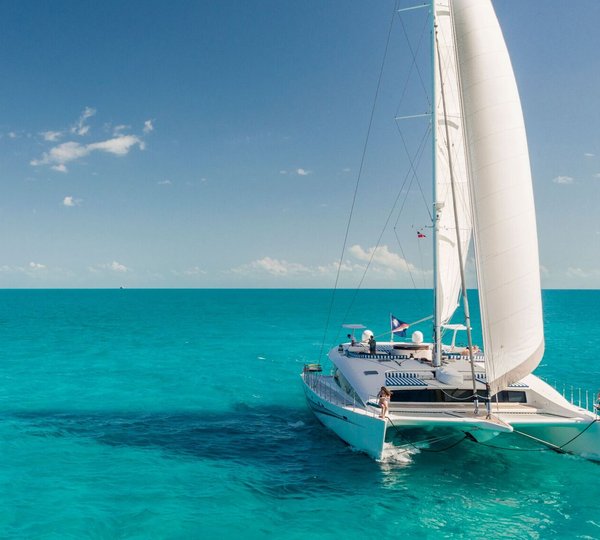
The Caribbean
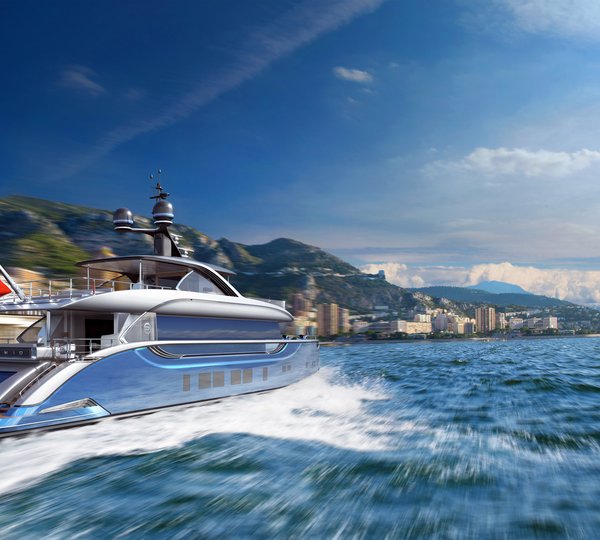
The Mediterranean
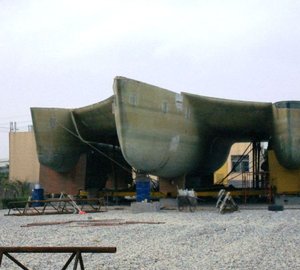
Prout PT 138: The World’s largest sailing trimaran taking shape
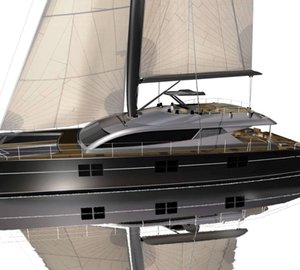
The Blue Coast 95 Custom Catamaran to be launched this summer.
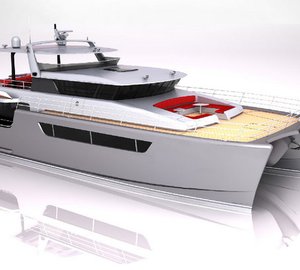
Eco-friendly catamaran Heliotrope 80 by Bakri Cono
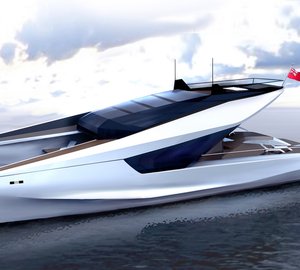
JFA Yachts – Showboats Design Awards & Superyacht Design Symposium 2015 Event Associate
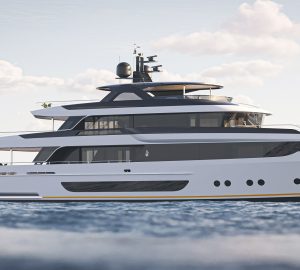
Van der Valk Shipyard announce 35m explorer yacht SAMBA
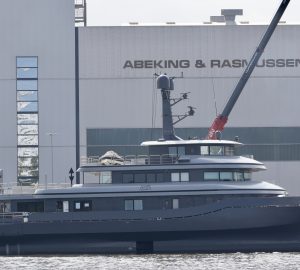
Abeking & Rasmussen’s 41-meter superyacht NURJA relaunched after refit

Aegean Yachts unveil 26m explorer yacht HEKATE
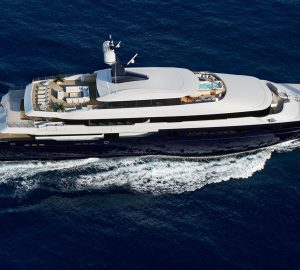
Late summer special offer on board 72m superyacht ARBEMA in the Western Mediterranean

The International SeaKeepers Society will host its 2024 annual Founders Event in October

OCEA delivers 33m motor yacht ARAOK II to her new owner
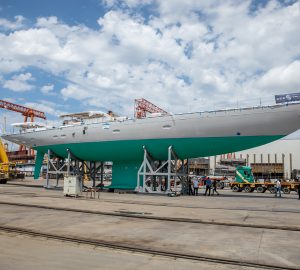
39m sailing yacht LINNEA AURORA launched by SES Yachts
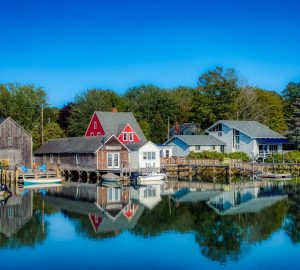
A luxury charter yacht is the perfect way to encounter New England’s fall foliage display

A first look at 55m superyacht PROJECT AGNETHA from Heesen Yachts
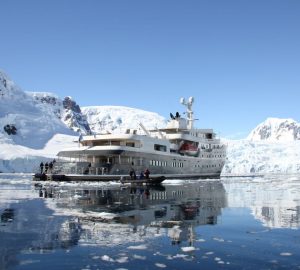
Charter yachts offering citizen science opportunities around the world
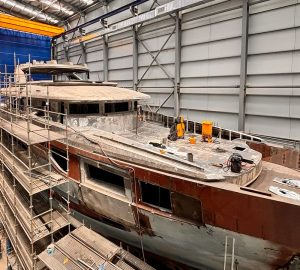
44m superyacht ORION ONE reaches a construction milestone
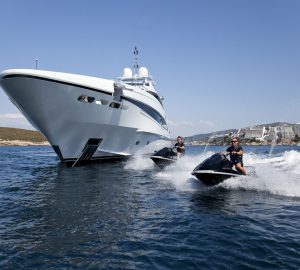
44m charter yacht JEMS offers 9 days for the price of 7 in August in Italy
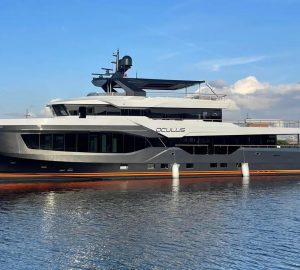
37m luxury explorer yacht OCULUS brand new to the charter market on both sides of the Atlantic
LIVE Scientific datas
- About Sails of Change
- Sails of change
- Spindrift for schools
Maxi-trimaran
Release date : 26th August 2008
Architect : VPLP

Weight: 21 tonnes
Number of crew aboard: 11
Maximum speed: 90 km/h
4th fastest round the world reference time in 47d, 10h
Length : 37 meters
Width : 23 meters
Air draught : 40 meters
Water draft : 5,5 meters
Mainsail : 351 m2
Size J0 : 461 m2
Size J1 : 284 m2
Size J2 : 179 m2
Size J3 : 80 m2
Central daggerboard : 1
Rudders: 3, including 2 lateral T-rudders
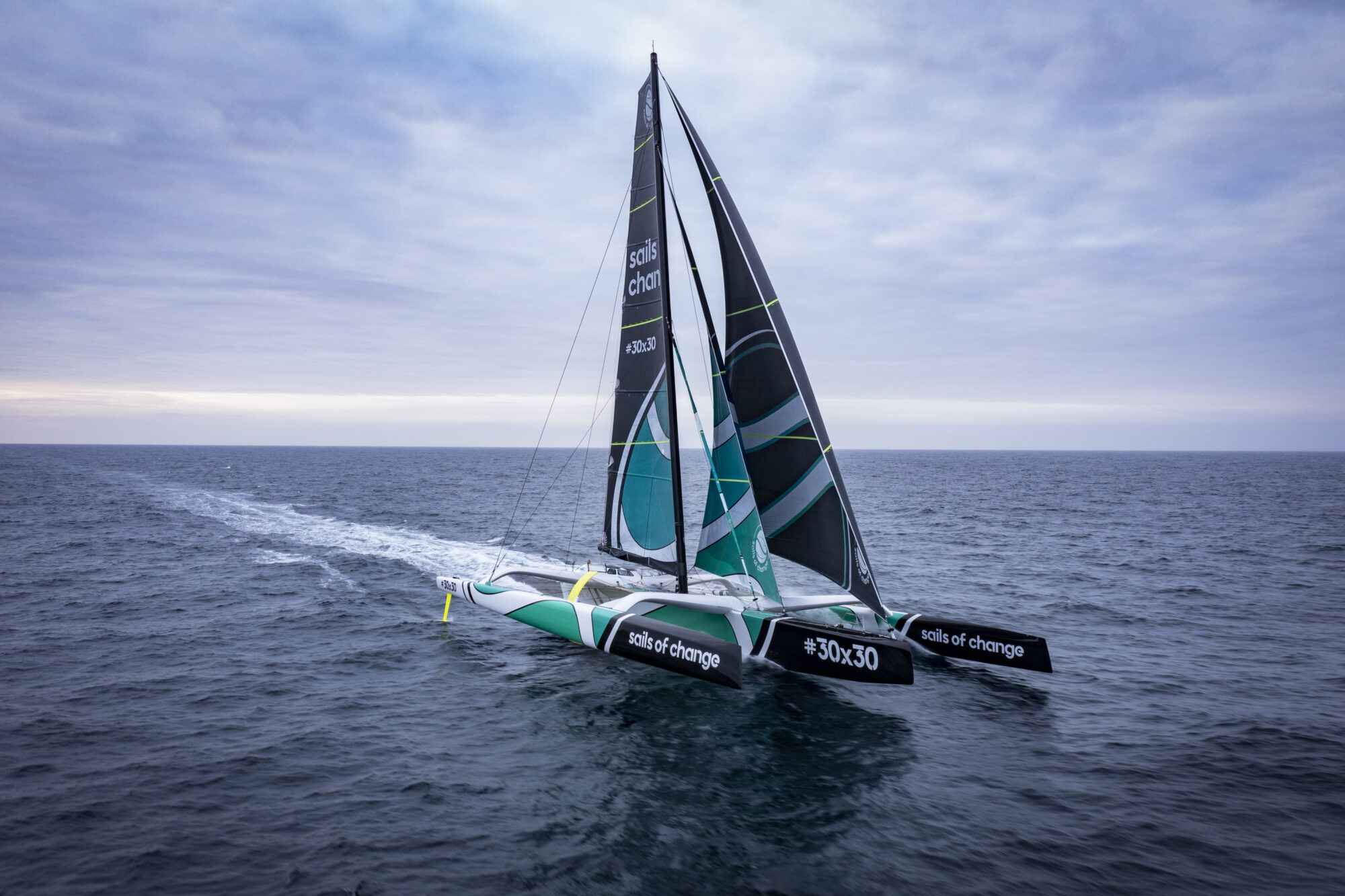
Her history
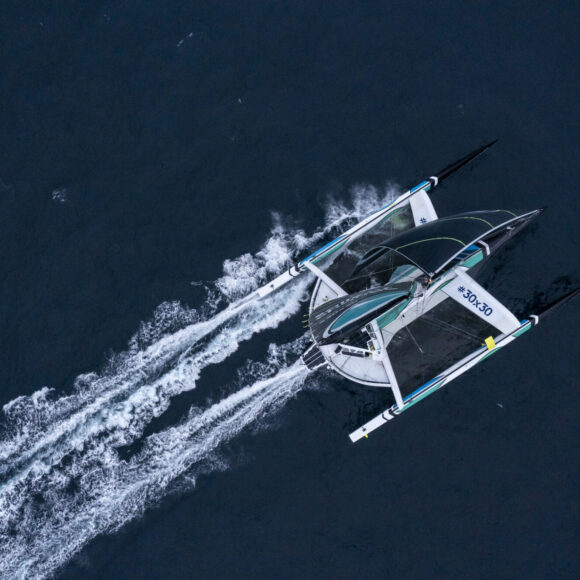
An extraordinary trimaran
Launched in 2008, the largest racing trimaran ever built joined the Sails of Change (previously Spindrift) fleet in 2013, having secured the round the world record in the hands of Loïck Peyron and his crew of 13 sailors. Renamed and repackaged, this giant of ocean racing went on to smash the Discovery Route record in 2013 between Cadiz, Spain and San Salvador, Bahamas, and gain renown in several legendary races including the Rolex Fastnet Race, the Route du Rhum and the Transat Québec-Saint-Malo.
Designed for crewed sailing, the maxi-trimaran was converted to a solo configuration in 2014 for skipper Yann Guichard to race the Route du Rhum, which he finished in second place. This was one of the most ambitious sporting challenges of the 21 st century: one man at the helm of the world’s largest offshore racing trimaran originally designed to be sailed by 14 sailors – an extraordinary demonstration of technical and human skill. His achievement has become part of the legend of what is known as the queen of transatlantic races.
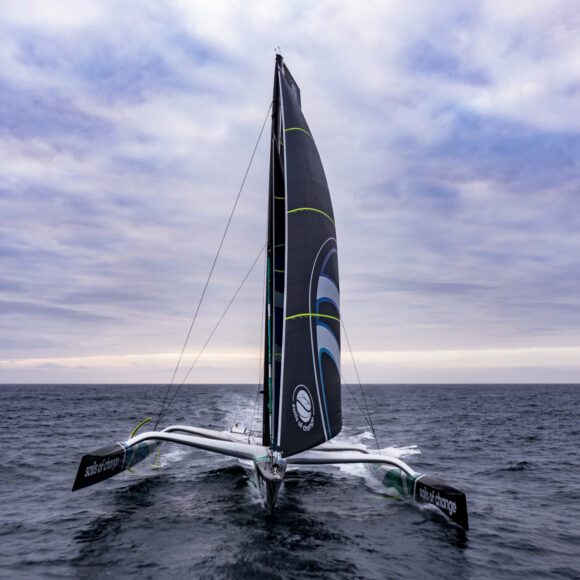
Objective Jules Verne Trophy
In crewed configuration, the major goal centres on the legendary Jules Verne Trophy. The crew completed the course in 2016 notching up the second fastest time in history (third fastest time today*) and making crew member Dona Bertarelli the fastest woman to sail around the world. In 2019, on a third attempt at breaking the Jules Verne Trophy record, the team on the maxi-trimaran set a new Ushant-Equator Record in a time of 4 days 19 hours and 57 minutes. In 2020 and 2021, Multiplast made several improvements to the maxi-trimaran with the aim of maximising her future performance and she stands in readiness to return to the record hunting fray in her most optimised form ever.
*Fourth best time ever, including the solo record attempt posted by F. Gabart.
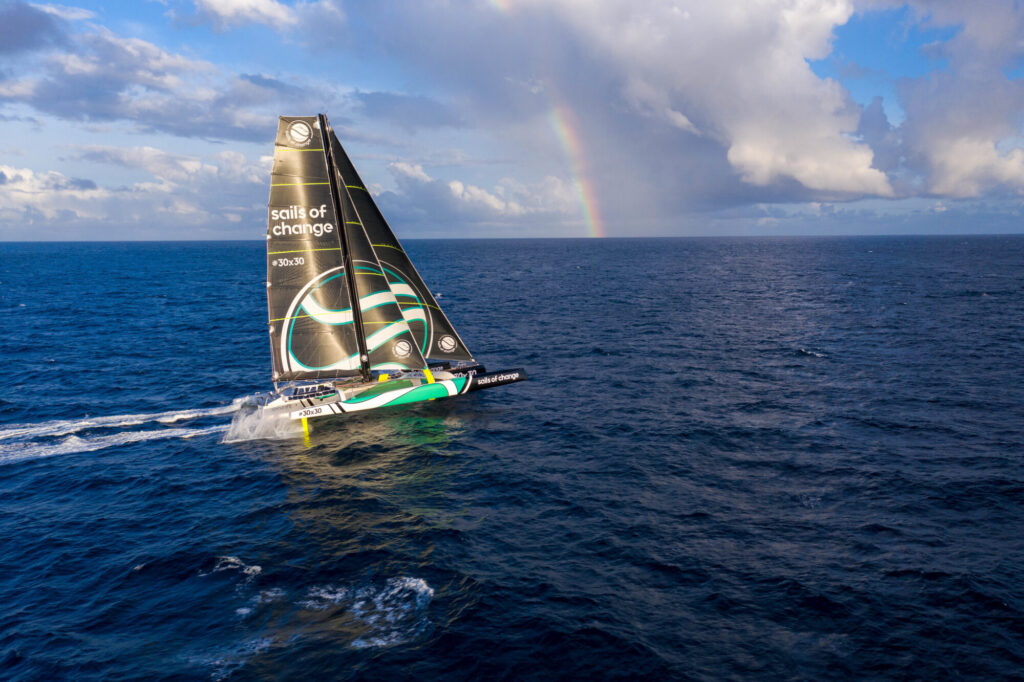
Yann Guichard
- Sails of change (Maxi)
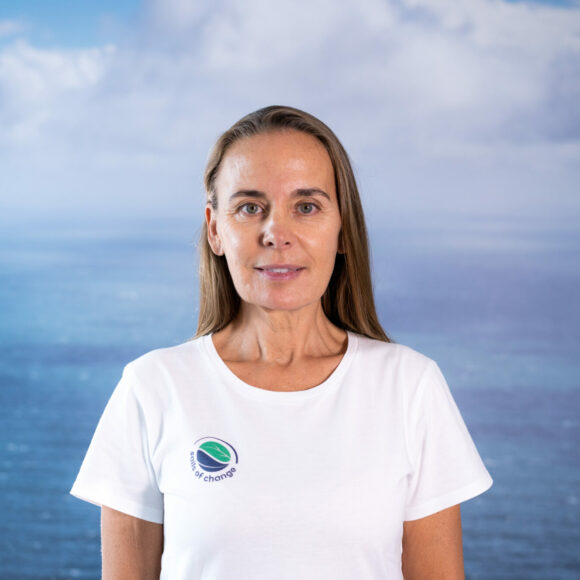
Dona Bertarelli
Onboard reporter.
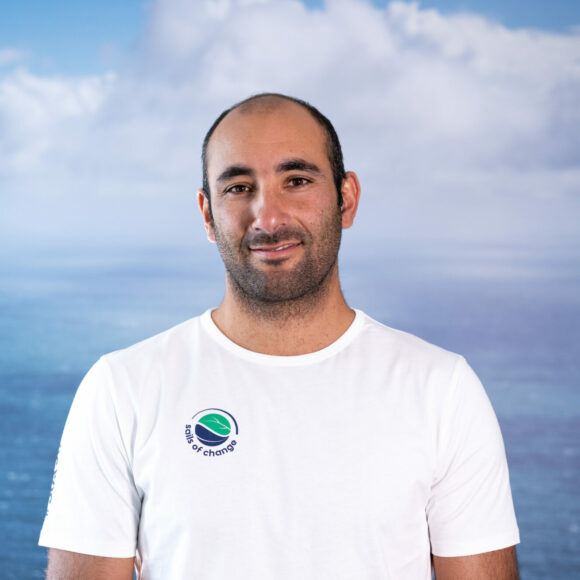
Benjamin Schwartz
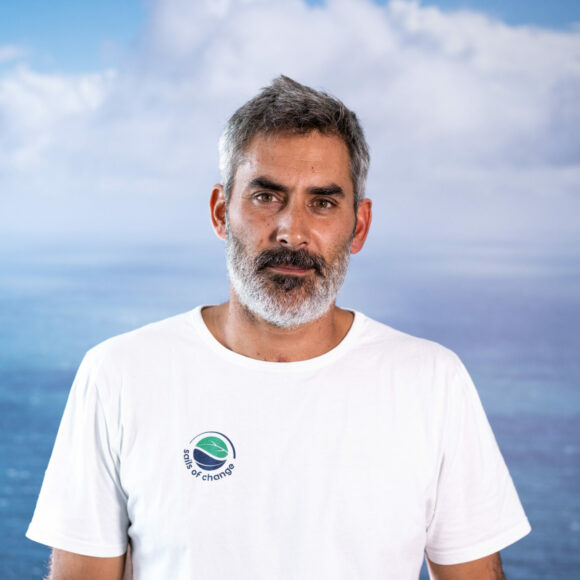
Jacques Guichard
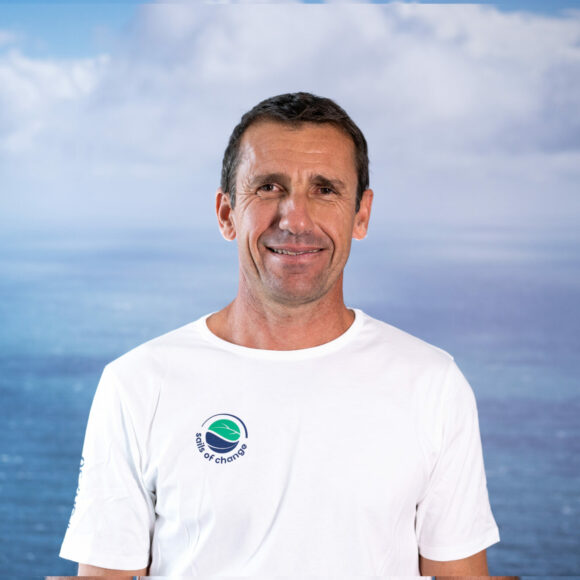
Xavier Revil

Duncan Späth
- Sails of change 10 (TF35)
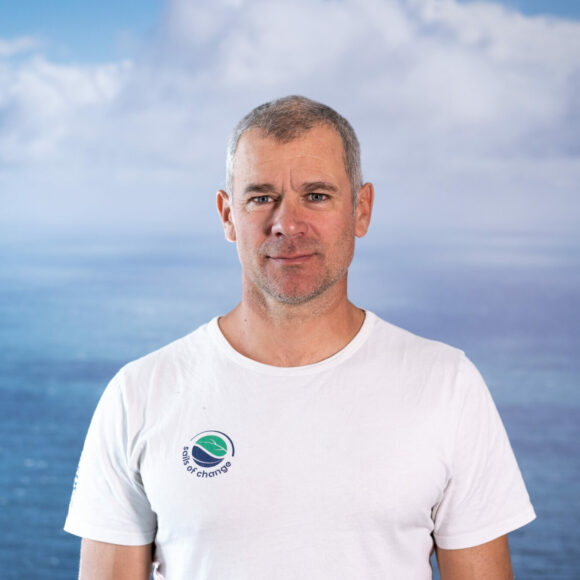
Thierry Chabagny
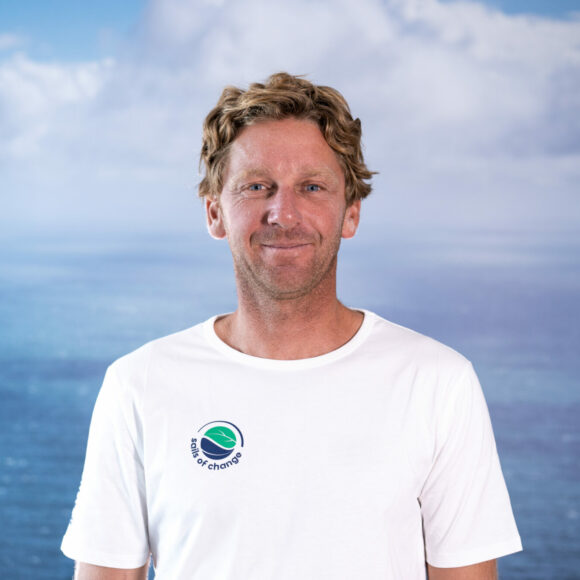
Grégory Gendron
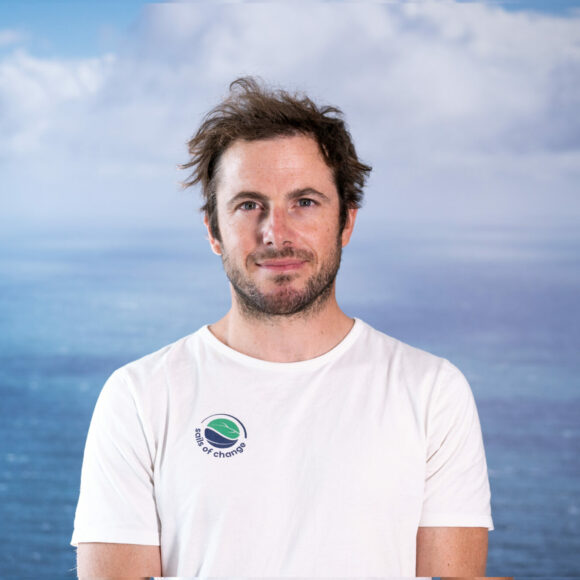
Julien Villion

Jackson Bouttell

Yann Jauvin
Best performance
- YACHT DESIGN
- YACHT MARKET
- YACHT CLUBS
- YACHT HOTELS
- CHARTER YACHTS
- YACHT SHOWS
- REGATTAS & RACES
YACHT ACCESSORIES
- YACHT APPAREL
- SAILOR GUIDE

According to Prout International reports, the work on the world’s largest sailing trimaran, the PT-138 , is proceeding productively. The three hulls have been successfully joined and are sitting in the build tent. Also the decks have been completely infused and are soon going to be joined.
The Prout PT-138 is designed and constructed as an all-composite shallow draft sailing trimaran operated by a professional crew. The 138 feet trimaran will offer a 46 ft beam with a very small draft (only 1.52 m).
The trimaran is intended to conduct extended offshore passages but can be also used for charter purposes.
Specification of the Prout PT-138:
LOA: 138 ft Beam: 46 ft Displacement: 32,767 kg Draft: 1.52 m Rigging and Sails: Mast Height: 43 m Mainsail 257 m 2 Genoa: 259 m 2 Gennaker: 271 m 2 Water Tank: 3,785 l Fuel Tank: 15,142 l Engine: 625 cv
Related links: Prout International
Photo: proutinternational.com
- Prout International
- Prout PT-138
Related Articles
Skia by design storz: unveiling of a 109-meter superyacht concept, introducing the wallywhy100: a marvel of design and performance, sinot’s beach superyacht series: a symphony of luxury, nature, and sustainability, staying afloat: a guide to survival suits for boaters, navigating waters with ease: top 5 dog ramps for your water-loving pup, unleashing comfort and safety: a guide to essential boat accessories for dogs, unwrapping the top 10 best christmas gifts for yacht enthusiasts, docktail butler elite teak table: elevating yachting experiences with elegance and functionality, exploring the abyss: unveiling the powervision powerray wizard underwater drone, seas of sip: captain ladle and the toadfish tumbler tale, sailing the seas of sound: the fusion® apollo™ ms-srx400 marine zone stereo adventure, water exploration with robosea warp10 water scooter.
OceanShaker.com is a treasure chest of information for people who really "dig" yachts. We believe our project will be a real concoction of beautiful yachts, fresh news, ocean winds and, of course, adventures.
Contact us: [email protected]
© Copyright 2023 - Oceanshaker.com

The global authority in superyachting
- NEWSLETTERS
- Yachts Home
- The Superyacht Directory
- Yacht Reports
- Brokerage News
- The largest yachts in the world
- The Register
- Yacht Advice
- Yacht Design
- 12m to 24m yachts
- Monaco Yacht Show
- Builder Directory
- Designer Directory
- Interior Design Directory
- Naval Architect Directory
- Yachts for sale home
- Motor yachts
- Sailing yachts
- Explorer yachts
- Classic yachts
- Sale Broker Directory
- Charter Home
- Yachts for Charter
- Charter Destinations
- Charter Broker Directory
- Destinations Home
- Mediterranean
- South Pacific
- Rest of the World
- Boat Life Home
- Owners' Experiences
- Conservation and Philanthropy
- Interiors Suppliers
- Owners' Club
- Captains' Club
- BOAT Showcase
- Boat Presents
- Events Home
- World Superyacht Awards
- Superyacht Design Festival
- Design and Innovation Awards
- Young Designer of the Year Award
- Artistry and Craft Awards
- Explorer Yachts Summit
- Ocean Talks
- The Ocean Awards
- BOAT Connect
- Between the bays
- Golf Invitational
- BOATPro Home
- Superyacht Insight
- Global Order Book
- Premium Content
- Product Features
- Testimonials
- Pricing Plan
- Tenders & Equipment
Top 10 largest sailing yachts in the world
The list of the top ten largest sailing yachts in the world is not easily disrupted. In fact, it had remained unchanged since the launch of the 106.7-metre Oceanco Black Pearl in 2018, which swiped the top spot from Lürssen 's 93-metre Eos . For four years, Black Pearl remained the largest yacht in the world until early in 2023 when Oceanco sent a new flagship down the slipway, the mighty 127-metre Koru . Read on to discover our official list of the largest sailing yachts in the world.
1. Koru | 127m
Leading this list is a new entry: Oceanco 's record-breaking 127-metre sailing yacht Koru . Commissioned by Amazon founder Jeff Bezos, Koru has been the subject of much speculation for years but was revealed in all its glory in 2021. Not only is she the largest sailing yacht in the world, she is also the largest superyacht ever to be built in the Netherlands. Her name, Koru, is the Māori word meaning "new beginnings" and she is accompanied by a 75-metre support vessel named Abeona . She was delivered in 2023 and is over 20 metres longer than the former title-holder Black Pearl.
- Builder: Oceanco
- Country of build: Netherlands
- Delivery year: 2023
- Length Overall: 125.82 m
- Beam: 16.95 m
- Gross Tonnage 3493 t
More about this yacht
More stories, 2. black pearl | 106.7m.
Instantly recognisable with her black sails and Dynarig set-up, Black Pearl is the second-largest sailing yacht in the world. Delivered during the same year as 142.81-metre Sailing Yacht A (officially designated as a sail-assisted motor yacht), Black Pearl spent five years in development at Dutch yard Oceanco . Dykstra Naval Architects , Ken Freivokh , Nuvolari Lenard , BMT Nigel Gee and Gerard P Villate all contributed their expertise to this monumental project, which looks set to turn heads the world over for decades to come. She is often compared to Maltese Falcon , the first Dynarig superyacht, but boasts a number of technological advancements. She flies 25 per cent more sail area with hinging spars that fold down to allow her to pass through the Panama Canal, but it is what lies beneath that really counts. Two variable pitch propellers harness kinetic energy while she is under sail, which can run the hotel or recharge the batteries, allowing her to cross oceans without expending a drop of fuel.
- Delivery year: 2018
- Length Overall: 106.7 m
- Gross Tonnage 2700 t
3. Eos | 92.93m
Eos was built in Germany under a cloak of secrecy for her American media and movie mogul Barry Diller. Eos is a three-masted Bermuda rigged schooner and was refitted at Royal Huisman in 2011. After emerging from her refit the yacht caught fire in Norway and had to return to the yard to be repaired.
- Builder: Lurssen
- Country of build: Germany
- Delivery year: 2006
- Length Overall: 92.93 m
- Beam: 13.5 m
- Gross Tonnage 1500 t
4. Athena | 90m
Athena was built by the Royal Huisman in Holland for US software developer Jim Clark. Athena's advanced engineering means that she is able to sail in relatively light airs, while still offering the interior space typically only found on motor yachts. In stronger winds, Athena has been credited as attaining 19 knots under sail. The yacht's three closed decks include a large owner's suite, four guest suites, a saloon and dining room on the main deck and a sky lounge on the upper deck. Her clipper-bow and three-masted schooner sprung from the boards of Pieter Beeldsnijder (exterior styling) and Dykstra Naval Architects (naval architecture).
- Builder: Royal Huisman
- Delivery year: 2004
- Length Overall: 90 m
- Beam: 12.2 m
- Gross Tonnage 1103 t

5. Maltese Falcon | 88m
Maltese Falcon was built for the late American venture capitalist Tom Perkins. The iconic three-masted schooner is the fifth-largest sailing yacht in the world. Maltese Falcon's rig is made up of three unstayed, 'weapons-grade' carbon fibre masts, with a fully computerised sail and rotating mast system. The system has been dubbed a triumph of design, development and engineering and Maltese Falcon has topped an impressive 24 knots under sail. The Ken Freivokh interior is a marriage of industrial chic and high tech. It features leather, glass, wood and steel as well as a modern art collection. The yacht has accommodation for 12 guests and is available for charter.
- Builder: Perini Navi
- Country of build: Turkey
- Length Overall: 88 m
- Beam: 12.47 m
- Gross Tonnage 1112 t
Yachts for charter
6. aquijo | 85.9m.
The highly anticipated Aquijo was the result of a collaboration between Vitters and Oceanco. Both Dutch yards worked closely with the owner's representative to create a highly complex, performance-driven sailing machine that became the third largest sailing superyacht when launched. Aquijo is an aluminium ketch-rigged yacht, and features a custom steering system. Aquijo's interior layout provides clear sight lines thanks to her high-volume superstructure.
- Builder: Vitters | Oceanco
- Delivery year: 2016
- Length Overall: 85.9 m
- Beam: 14.48 m
- Gross Tonnage 1538 t
7. Sea Eagle II | 81m
Delivered in 2020, Sea Eagle II is the most recent addition to the top ten largest sailing yachts in the world. Built by Royal Huisman, Sea Eagle II features exterior styling by Mark Whiteley and naval architecture penned by Dykstra Naval Architects . Sold in summer 2016 by Northrop & Johnson as Project RH400, Sea Eagle II is the largest yacht ever built by the Dutch yard.
- Delivery year: 2020
- Length Overall: 81 m
- Gross Tonnage 1150 t
8. M5 | 78.4m
Built by Vosper Thorneycroft in Southampton, England, M5 was launched as the iconic yacht Mirabella V in 2004. She remains the world’s largest sloop to date. M5 was designed by Ron Holland for American yachtsman Joe Vittoria, who enjoyed sailing her for seven years before she was sold on. The new owner renamed her M5 and she was extended by 3.2 metres in a refit at Pendennis before her relaunch in 2013. Her most recent refit , however, in 2019, saw M5 emerge from the sheds with all new paint-work, composite biminis, a reinforced mast and a new bow-thruster.
M5 has a displacement of 780 tonnes (165 tonnes of which is the keel). The carbon fibre mast is an amazing 88.3 metres tall and can carry approximately 3,700 square metres of sail.
- Builder: Vosper Thornycroft
- Country of build: United Kingdom
- Length Overall: 78.4 m
- Beam: 14.8 m
- Gross Tonnage 1009 t
9. Badis | 70m
The second largest Perini Navi sailing yacht to date, Badis was built for the multiple superyacht owner Bill Duker and launched in 2016 as Sybaris . The name comes from a Greek settlement in ancient Italy that was famed for its hedonism, feasts and excesses. Featuring naval architecture and sailplan optimisation by Philippe Briand, this all-aluminium ketch can host up to 12 guests across six cabins. Interiors are by PH Design with a total internal volume of 870GT, while the crew quarters allow for a staff of up to 11. Under power, Badis's twin MTU 16V 2000 M72 diesel engines generate a total of 3,860hp, resulting in a top speed of 17.5 knots and a maximum cruising range of 5,000 nautical miles at 12.5 knots.
- Country of build: Italy
- Length Overall: 70 m
- Beam: 13.24 m
- Gross Tonnage 887 t
10. Atlantic | 69.3m
Atlantic might have the looks of an old classic but don't be fooled, this modern three-masted schooner was delivered in 2010 to an owner with a penchant for classic sailing yachts. She was built from scratch as a replica of the famous 64.5-metre Townsend & Downey schooner by the same name built in 1903. The sailing yacht made history when she set the record for the fastest Atlantic crossing in 1905 - a record that remained unbroken for nearly 100 years - but she was sadly scrapped in 1982. Inspired by its legacy, owner Ed Kastelein built a replica as a tribute to the record-breaking classic at the Van de Graaf shipyard in the Netherlands. The new Atlantic 's three masts stand 50 metres high and support 1,700 square metres of sails with 36 winches in bronze built specially by Harken.
- Builder: Van der Graaf
- Delivery year: 2010
- Length Overall: 69.31 m
- Gross Tonnage 268 t
Yachts for sale
Sponsored listings.

16 Best Trimarans For Sailing Around The World (And a Few For Daysailing)
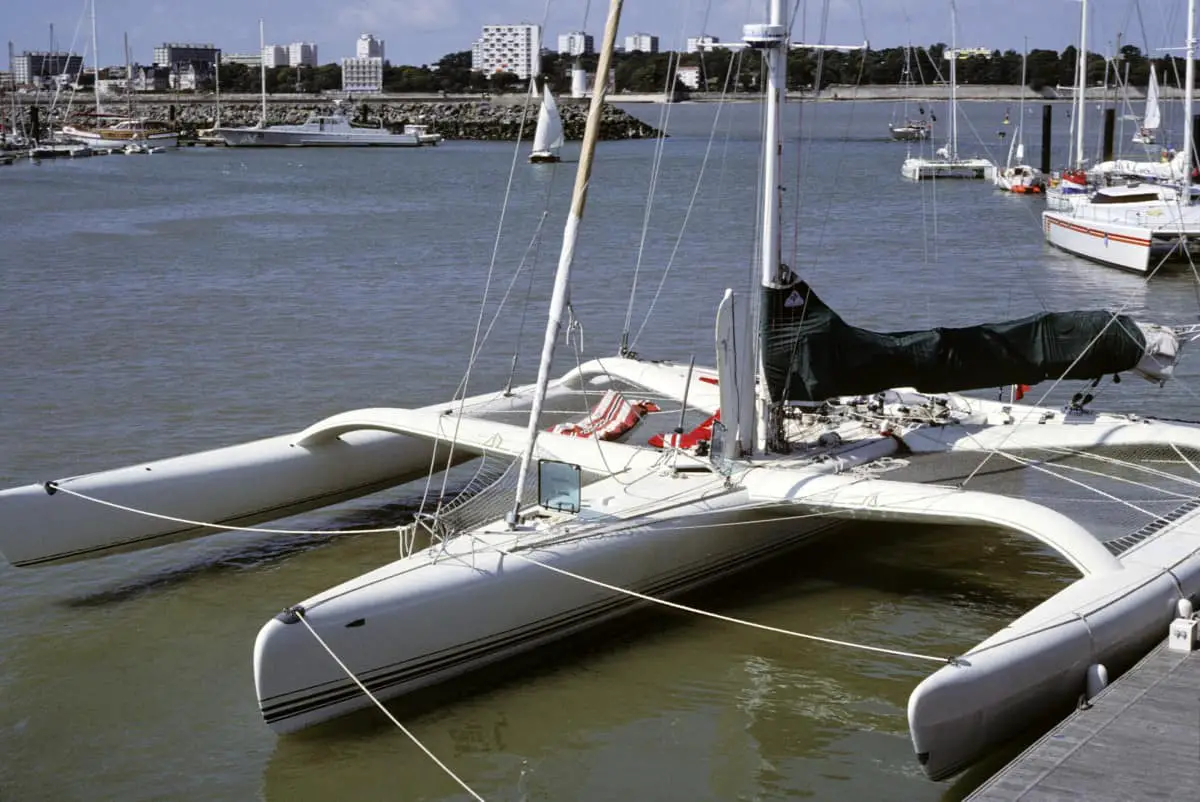
As an Amazon Associate, we earn from qualifying purchases. We may also earn commissions if you purchase products from other retailers after clicking on a link from our site.
Trimarans are growing in popularity worldwide, due to their light construction and high stability these multihulls are even faster than catamarans. Trimarans are still one of the lesser-known boat types so in this article ill be checking out some of the most popular models.
The best trimarans include:
- The Neel 43
- The Neel 47
- Dragonfly 28
- The Pulse 600
- Corsair 37
These tris are built with your safety in mind while also packing powerful speed and a wide array of comfort features to optimize your sailing experience , some are even foldable making them possible to load on a trailer and transport to the sailing destination of your choosing.
In this article, I have created a list of the 16 best trimarans in the market and their unique features. You’ll also learn the best options for different purposes such as circumnavigation, weekend sailing, racing, and more.
Table of Contents
What Is a Trimaran?

A trimaran is a multi hulled sailboat with three individual hulls; the main hull ( vaka ) and a pair of outrigger hulls ( amas ). These smaller outrigger hulls are attached to the main hull using beams.
While trimarans have a rich history dating back nearly four millennia, these types of sailboats have only gained popularity in the late 1900s and early 2000s.
Trimarans are primarily used as personal boats for sailing enthusiasts or racing. These sailboats draw their versatility from their lightweight design, making them faster and easier to handle at sea when compared to single-hulled boats (monohulls). Additionally, the three hulls also contribute to better stability, making it very hard to capsize (although more likely than a cat according to this study)
Trimarans come in various sizes, and some can be as small as 19 feet (5.8 meters) in length, while others go up to 60 feet (18meters). They’re also used for different purposes. Most trimarans are used for racing and recreational purposes, although some units are still used as ferries.
As with all things, to find out which is the best we need to understand what it will be used for. There is a big difference in requirements between a boat used for day sailing compared to offshore around the world sailing.
The list below highlights the best trimarans for different purposes.
Best Trimarans For Cruising, Liveaboard and Sailing Around The World
The Neel 43 is a French trimaran best suited for cruising. Its key features include:
- Easy maneuverability on the open sea by only a small number of crew members
This unit is also built for comfort, ideal for more extended travels. This 43-feet (13-meter) trimaran is also made with recyclable and bio-sourced materials, highlighting the manufacturer’s commitment to environmental consciousness.
This trimaran has a base price of €329,000 excluding VAT. This translates to approximately $370,138.
2.Neel 47 Possibly The Best
Named the best full-size multihull for 2020, the Neel 47 is a strong contender for one of the best trimarans in the market. This 47-foot (14.3-meter) long trimaran features optimized exterior and interior ergonomics for a unique design and look.
Still on design, the Neel 47 is ideal for couples looking to take a weekend off or spend some time as liveaboard. It has a spacious owner’s cabin and two bedrooms. It also features a spacious living room and kitchen and is optimized to ensure comfort for a couple.
The Neel 47 also has two basic guest cabins so your friends or children can tag along on your sailing adventure. Accordingly, this unit is ideal for those looking to explore the sea for the sheer joy of sailing.
The Neel 47 comes at a 571,139 euro ( $643,600 ) price tag, excluding VAT.
3. Rapido 60 The Fast and Comfortable Circumnavigator
The Rapido 60 offers a blend of performance, safety, and luxury, making it one of the best options for bluewater sailing. Measuring 59.3 feet (18 meters) in length, the Rapido 60 is an imposing unit. It’s made from lightweight sandwiches and carbon materials that provide speed and strength, allowing it to stand up to strong ocean currents.
The Rapido 60 also has spacious living spaces and is built for comfort at all points of the sail. Its design also optimizes safety. While it’s an ideal option for circumnavigating, it’s also an excellent choice for racing due to its speed.
This is also the same boat that The Youtube channel La Vagabond just purchased.
The Rapido 60 retails at $1,400,000 .
4. Rapido 40
The Rapido 40 measures 39.4 feet (12 meters) in length and is ideal for cruising around the world. The Rapido 40 features twin “C” foils, which provide added lift, enhancing its speed and performance whether you are sailing downwind or upwind.
Because it has C foils, this trimaran doesn’t have a central daggerboard, increasing interior space. Accordingly, it’s an excellent option for couples looking to cruise and enjoy great performances .
The Rapido 40 is made from high-tech all-carbon materials for a lightweight yet sturdy design. This material is also used for the countertops and furniture, and the cork flooring adds a touch of style.
This trimaran retails for $595,000 , making it a cheaper option than the Rapido 60.
5. Dragonfly 40
The Dragonfly 40 measures 40 feet (12 meters) in length. It features high-comfort standards, making it one of the best trimarans in the market for taking your family for a cruise. Because of its larger size, it has a better capacity, being capable of accommodating six to eight people, so you can bring your family and friends along.
It’s easy to navigate and extremely safe. With a maximum speed of 24 knots (44.5 km/h), this trimaran also provides fast speeds to make your cruise even more exhilarating.
The Dragonfly 40 retails from €509,000 exclusive of VAT, which rounds up to $572,000 .
6. Dragonfly 32
The Dragonfly 32 is a high-performance cruiser. Like the Dragonfly 28, this unit features a contemporary design for racing. This trimaran can accommodate five to seven crew members.
Although slightly longer than the Dragonfly 28 with its 32-foot (9.8-meter) length, the Dragonfly 32 has a max speed of 23+ knots (42.6+ km/h), making it one of the fastest trimarans for racing. This unit also has comfortable accommodation, which makes it an ideal option for a weekend cruise with family and friends.
The Dragonfly 32 has a base price of $350,000 .
7. Corsair 37
Thanks to a variable draft with a retractable rudder, the Corsair 37 is an ideal choice for shallow water exploration. This 37-foot (11.3-meter) long trimaran features advanced foam-cored construction designed for safety, making it virtually unsinkable.
The carbon hulls minimize weight, this makes for a lightweight ocean exploration sailboat with blistering speeds. One of its selling points is that this trimaran has previously been used for Arctic expeditions, possibly marking it as one of the better options for circumnavigation and offshore sailing in the northern waters.
This trimaran has a base price of $189,000 but can go up to $204,125 .
Best Trimarans For Day/Weekend Sailing
8. dragonfly 28.
The Dragonfly 28 is a 28-feet (8.75-meter) long sailboat that can accommodate up to five people. It comes in two versions:
- Touring version: This version is ideal for families.
- Performance version: This is built to provide optimal performance for the sports enthusiast within you.
It clocks a maximum speed of 22+ knots (22+ km/h) and is beam-folded. It’s an excellent option if you want a high-performance, comfortable yet smaller unit for your day or weekend cruise.
The Dragonfly 28 starts at €188,280 inclusive of VAT, which comes to around $211,600.
9. Dragonfly 25
Like other trimarans under the Dragonfly brand, this 25-foot (7.62-meter) trimaran is great for both racing and short term cruising. However, this high-performance boat delivers easy handling, making it perfect for couples looking to take a ride out over the weekend and seasoned sailors looking for an exhilarating racing adventure.
The Touring version features a lightweight build and offers comfort and accommodation to keep you, and the few guests you can fit, comfortable during the ride. This trimaran also has a Sport version, which is optimized for racing.
The Dragonfly 25 retails from EUR 86,800 .
10. Pulse 600
The Pulse 600 trimaran is a compact sailboat. It’s made from lightweight, carbon-reinforced construction and vacuum-formed materials for optimal speed. This trimaran is an ideal option if you are looking for speed.
It also features ample deck space, greater stability, and volume than most trimarans of similar size and build.
This trimaran measures 19.8 feet (6 meters) in length and can be sailed single-handedly by one person with minimal effort. The Pulse 600 has a base price of $38,800 , which places it in the lower price range.
The F-22 is one of the smaller trimarans in the market. Developed in New Zealand, the F-22 is a folding trimaran built for speed. The hulls are made from narrow fiberglass tied together using fiberglass beams and aluminum, minimizing bulk while optimizing speed.
The F-22 is roomy and is not as pricey as other models in the market. This trimaran has two main versions:
12. 2019 Weta Trimaran
The 2019 Weta trimaran is a 14.5-foot (4.4-meter) trimaran featuring a carbon frame, centerboard, rudder foil, and rudder shock. The hull is made from fiberglass and foam. The Weta is built for strength and speed based on these lightweight materials.
The 2019 Weta trimaran is easy to sail and is worth considering whether you want to take a quiet sail, race with your friends, or take kids to a sailing lesson. It has a simple design and is easy to set up independently. Thanks to its collapsible design, this trimaran is easily stored away with minimal space demands.
13. WindRider 17
The 17.4-foot (5.3-meter) WindRider 17 is one of the more versatile trimarans in the market. It packs high performance for a low cost. This trimaran has a light rotating mast to boost performance, and a full-battened mainsail optimizes visibility.
This sailboat is made from rotomolded polyethylene, which is more durable than fiberglass and demands less maintenance.
The WindRider 17 has a comfortable interior and can fit six adults. This is an ideal choice for social sailing for a couple or a family and friends. It’s easy to ride, and a shallow draft allows easy maneuverability.
14. Astus 22.5
If you’re looking for something small but still comfortable, this 22.5-foot trimaran is for you. Built for speed and maneuverability, the Astus 22.5 has optional foils to optimize speed. The modern design, coupled with the spacious interior, can fit up to four beds. Accordingly, this trimaran is suited for family outings.
This trimaran also has a foldable design, collapsing to only 16 feet (4.9 meters) for easy storage.
15. Multi 23 Trimaran
The Multi 23 trimaran has a contemporary design, featuring a vinyl ester and PVC foam core construction. The section below the waterline is made of solid glass for a sturdy base.
The beams are made of lightweight carbon, and the trimaran features a 33-foot (10-meter) aluminum rotating wing mast for optimal harnessing of the wind. While ideal for weekend excursions with family, once rigged with the asymmetrical spinnaker will get your heart pumping.
This trimaran packs high performance at a lower cost than most other options in the market. It’s a good choice if you are looking for a high-performing unit without spending an arm and a leg.
16. Challenger Class Trimaran
The Challenger Trimaran 15 is the best choice for persons with disabilities. It’s designed to provide disabled sailors an opportunity to explore their passion for sailing without worrying about aspects like safety or operation.
A man named Geoff Hold circumnavigated the British Isles in 2007, becoming the first disabled person to achieve this feat. He had quadriplegia.
Living up to its name, the Challenger can withstand harsh weather conditions while blending performance with speed.
Final Thoughts
Admittedly, no trimaran is best for everyone. But whether you are looking to race with your friends, take your loved ones or friends for a cruise over the weekend, or circumnavigate the ocean, you can rest assured that these lightweight trimarans will deliver speed, safety, and comfort to make it worth your while.
These brands are innovatively designed and feature intricate safety mechanisms that make them virtually unsinkable. Give them a shot and begin your ocean adventure.
- Basco Boating: A Comprehensive Guide & Introduction to Trimaran Yachts
- TheBoatAPP: New Trumarans: Which are the Best Ones
- Corsair Marine: Corsair 37
- Dragonfly: Dragonfly 28
- Rapido Trimarans: Rapido 60
- Neel Trimarans: Neel 43
- Yachting World: World’s Collect Yachts: Maxi Trimaran MACIF
- Yachting Monthly: Dragonfly 28 Performance
- Rapido Trimarans: Rapido 40
- Dragonfly: Dragon 32
- Dragonfly: Dragonfly 40
- Yachting World: Dragonfly 40 yacht tour: This cruising trimaran can do 24 knots
- Dragonfly: Dragonfly 25
- NauticExpo: Dragonfly 25
- Yachtworld: Corsair 37 boats for sale
- Cruising World: Neel 47 Trimaran: Best Full-Size Multihull0
- Neel Trimaran: Neel 47
- Multihull Solutions: NEEL 47 Boat Review | Cruising World
- Yacht World: 2022 Neel 47 for sale
- Farrier International: F-22
- Weta Marine: The Boat
- WindRider: WindRider 17 Trimaran Sailboat
- Astus Boats: Astus 22.5
- Boat-specs: Multi 23
- National Maritime Museum Cornwall: Challenger Trimaran #1 – BC26
Owner of CatamaranFreedom.com. A minimalist that has lived in a caravan in Sweden, 35ft Monohull in the Bahamas, and right now in his self-built Van. He just started the next adventure, to circumnavigate the world on a Catamaran!
Leave a Reply Cancel reply
Your email address will not be published. Required fields are marked *
Save my name and email in this browser for the next time I comment.
Recent Posts
Must-Have Boat Gear for Catamaran Sailors!
Sailing is probably the most gear-intensive activity I've ever done; there are so many decisions to be made about what gear to buy now, for tomorrow, and what to definitely never buy. The gear on...
6 Best Trailerable Trimarans For Bluewater and Coastal Sailing
Having a boat costs a lot of money, even when you are not using it, marina fees, etc. And once it is in the water most sailors never go very far from their "home marina" and sailing will be somewhat...

Published on April 8th, 2014 | by Editor
Spindrift: World’s largest racing trimaran
Published on April 8th, 2014 by Editor -->
After three months of ambitious boatbuilding, the 40-meter trimaran Spindrift 2 was re-launched this month in Lorient, France. As the largest racing trimaran in the world, it has been optimised for the demanding program that is planned for 2014.
The Spindrift Racing team, led by Dona Bertarelli and Yann Guichard, will be on standby in the United States from the start of June, waiting in Newport for a good window to tackle two prominent crewed records the boat had previously set (as Banque Populaire V) by Pascal Bidegorry in August 2009.
Spindrift 2 will seek to better the 2880nm Transatlantic Record (New York City to Lizard Point) of 3d 15h 25 min 48s (32.94 knots) and the 24 hour distance record of 908 miles (37.84 knots).
To appreciate this maxi trimaran, acclaimed sailing writer G. Bruce Knecht joined the team prior to the refit. Here is his report…

Sunrise was still an hour away when I arrived in the port of Lorient. At first, it was difficult to see much of anything. Three 131-foot-long hulls and a towering mast were jet black, as were the uniforms of the crewmen, who moved about with the help of head-mounted flashlights.
“Welcome to the world’s largest racing trimaran,” Bertarelli said as I stepped aboard.
Named for the spray of water launched by the hulls as they charge through the sea at speeds that were, until recently inconceivable for a large sail-powered vessel, Spindrift 2, is as fast as the catamarans that began racing for the America’s Cup the same week I was in Lorient. And it has far greater endurance: In 2012, its previous owner and former namesake, French financial institution Banque Populaire, sailed the boat around the world in an astonishing 45 days, breaking another record set by Franck Cammas, who did it in 48 days in 2010.
Bertarelli–whose fortune came from Serono, the Italian pharmaceutical giant founded by her grandfather–caused a stir when she purchased the boat in January 2013, in part because a female owner and co-skipper would be rarity in the male-dominated world of yacht racing. And there was her familial connection to the sport: Her billionaire brother Ernesto founded and led the Swiss team that won the America’s Cup in 2003 and 2007.
“I ended up getting really excited about competitive sailing,” she told me of her brother’s influence,” and being a spectator wasn’t enough.”
The story also has a romantic dimension. Bertarelli’s co-skipper would be her partner, French yachtsman Yann Guichard. Their relationship began a few years earlier when Bertarelli hired Guichard to serve as coach for a catamaran she raced with an all-female crew on Lake Geneva.
“Yann and I wanted to have a common project,” Bertarelli said in explaining her decision to buy Spindrift 2. “It would take a year and a half to design something like this one and another year and a half to build it. This boat was launched in 2008 and it’s still very competitive. If we can find ways to improve its performance, we believe we have a window of four to five years to break some records.”
The goal for the day was to perfect various techniques and enhance the crew’s cohesiveness. First, though, they had to get the boat away from the dock. With its 75-foot width, Spindrift 2 is an awkward best, something like a sumo wrestler in a teashop, which is why we had to assemble so early. The forecast called for heavy wind later in the day, which would not be a problem except for the need to exit a narrow waterway beforehand.
As a trio of tenders–each powered by an engine with at least 150 horsepower–worked like little tugboats to guide Spindrift 2 away from the dock, Guichard was standing at one of the two large steering wheels. They are positioned at opposite sides of the boat so that the helmsman can always steer from the windward hull, the one that lifts out of the water when the breeze is good.
Once we cleared the harbor, when the wind speed was 12 knots, Guichard asked the 14-person crew to raise the 4,800-square-foot mainsail and a smaller headsail. As the sails filled, the port hull levitated from the water and we accelerated rapidly. We were soon moving at twice the speed of the wind. If that’s a concept that’s difficult to grasp, another fact of super-fast sailing was all too apparent: You do not want to fall off the boat. “After two minutes in the water, it would be impossible to see the person in the water,” Bertarelli told me. “After five, that person wouldn’t be able to see the boat.”
As we sailed away from the coast, we were moving so quickly that seagulls could not begin to keep pace, and before long, we had lost sight of land. When we were 28 miles off the coast, Guichard turned the helm over to me.
I have loved sailing ever since my grandfather launched me in a dinghy in Edgartown Harbor when I was nine years old. Since then, I have sailed relatively small–and slow–boats whenever I got the chance. I have some experience on larger boats. My first book, The Proving Ground, was about the 1998 Sydney to Hobart Race, the tragic competition in which several boats sank and six sailors died. When I was researching the book, I sailed on Brindabella, the 75-footer that played a central role in the story, during short races in Sydney Harbor. In 2005, I was aboard the large single-hull sailboat Mari-Cha IV when it broke the 100-year-old transatlantic race record. But most of my sailing is on a 28-foot sloop, which rarely leaves the protected waters of Long Island Sound. Going fast means seven knots.
The basic task of steering Spindrift 2–maintaining a course that took us generally where we wanted to go while taking maximum advantage of the wine–was fundamentally no different than on my boat, but the extraordinary speed meant that I had to rely on a digital readout of the wind’s direction rather than how it felt as it crossed my face. Spindrift 2’s speed was intoxicating–though it inevitably led to a desire for even more. I could not resist making frequent checks of another digital indicator, the one showing our speed. I was able to keep it close to 30 knots, and at one point I got it up to 35.4–or 41 miles per hour–which turned out, to my great surprise, to be our top speed of the day.
The speed produced a cacophony of sound. The shrouds were not just whistling but also were causing sections of the boat’s carbon-fiber structure to vibrate. The deck on which I was standing made an audible thumbing noise every few seconds, which I also felt through the soles of my shoes. A particularly arresting sound came from the rudder mounted on the back of the hull nearest to me. When I was doing my job well, this hull and the entire length of the rudder flew above the water. When I slipped up, the hull dropped down a bit and the rudder pierced the surface of the water to produce a loud hiss that sounded like that of an angry cat. It was a sound I enjoyed–more dramatically than the speed indicator, it gave proof to our remarkable pace–but it also seemed a bit like chastisement, or perhaps a warning.
There is no getting around the fact that Spindrift 2’s speed carries risks. Things could go wrong, in seconds. Structural elements could break. Was that thumping at my feet an indication of trouble? And then there is the ultimate fear: The boat could capsize.
Last June, Guichard was racing another boat owned by Bertarelli, a MOD70 trimaran, off the coast of Ireland when a sudden gust caused it to overturn. The mast crumbled and a member of the crew, Guichard’s brother Jacques, suffered a broken pelvis.
We had a close call as we sped off the coast of France. It came after the wind gusted from 18 knots to 33, which caused the windward hull to rise much too far out of the water. The crewman who should have released the headsail was slow in doing so, so the boat tipped further and further until the mast was 21 degrees beyond vertical. By then, Guichard, who was at the wheel, was unable to steer. Turning the wheel had no effect. Spindrift 2 was out of control. Guichard has a reputation for never losing his cool, but he was clearly worried as he shouted instructions and pulled at the wheel in a futile attempt to turn toward the source of the wind.
Eventually, when the headsail was eased, the hulls fell back toward the water, averting catastrophe. Nobody talked about the incident until later, when we were back at the dock and Guichard spoke about the day’s lessons learned, but it was a haunting moment.
It was impossible not to think about how the dangers would compound with even stronger gusts and at night during an ocean crossing. As we headed back to shore, I asked Bertarelli, who has three children with her former husband, plus a multibillion-dollar fortune, why she chose to risk it all rather than spending her time on a luxurious yacht or at her home in Gstaad, the gilded Swiss mountain village where she owns the elegant Grand Hotel Park. Her answer, predictably, was all about speed.
“On this boat, you can actually feel the acceleration–there’s a kind of kick–and that’s something you just don’t get on a traditional monohull sailboat,” she said. “When you’re on a multihull, you actually have the sense of flight.”
Republished from Rhapsody , the United Airlines inflight magazine
Editor’s note: Following Bruce’s excursion with the team, Dona Bertarelli and Yann Guichard led the maxi trimaran Spindrift 2 to beat the 3885-mile Discovery Route record, setting a new time of 6 days, 14 hours, 29 minutes and 21 seconds at an average speed of 24.5 knots. The route extends from Cadiz, Spain to San Salvador in the Bahamas, but must pass through the Canary Islands. Full report .

Tags: Bruce Knecht , Dona Bertarelli , records , Spindrift 2 , Yann Guichard
Related Posts
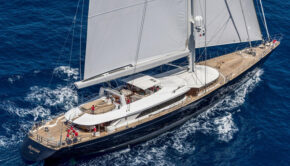
Why did Bayesian sink? →
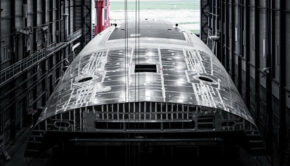
Turning the hull of a really big boat →
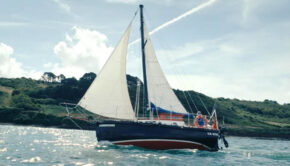
Getting smaller for record attempt →
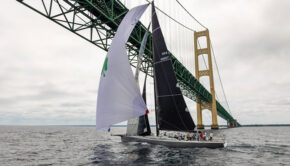
New elapsed record for Chicago Mackinac Race →
© 2024 Scuttlebutt Sailing News. Inbox Communications, Inc. All Rights Reserved. made by VSSL Agency .
- Privacy Statement
- Advertise With Us
Get Your Sailing News Fix!
Your download by email.
- Your Name...
- Your Email... *
- Comments This field is for validation purposes and should be left unchanged.


- Catamarans and multihulls , News , Press releases , SAILBOATS
Marlin 33 is the multihull of the year 2022
- Alex Giuzio
- May 19, 2022
The foldable sailing trimaran Marlin 33 has won the prestigious ‘Best Multihull of 2022’ award, the world’s highest accolade for multihull sailing and motor boats. Awarded in recent days at the International Multihull Boat Show in La Grande Motte, France, the prize was consigned into the hands of the Marlin 33’s designer, Dane Jan Andersen , at a special ceremony.
Mr Andersen is the head of Vision Boats , a small Danish team specializing in the design of multihull yachts that has an established working relationship with Marlin Trimarans. Designer, builder and sailor, with the Marlin 33 Mr Andersen has developed a trimaran for both racing and cruising that combines extreme sailing speed, great comfort and attention to aesthetics. It is one of the fastest trimarans in the world, built entirely in carbon with a set of innovations that have distinguished the work of Marlin Trimarans and Vision Boats, in particular its characteristic of being foldable and thus easily trailerable , but also easily assembled by just two people. The Marlin 33 won over the public at La Grande Motte: not only did the boat come top of the “Sailing Multihulls up to 40 feet” classification, it also received the most votes overall (47.36%) to win the first overall prize as the best multihull of the year, beating all the other boats and yachts in the competition .

As well as offering above-average sailing performance in its category, also thanks to its extreme lightness (the boat weighs just 1460 kilograms ), Marlin 33 has ample space on board to comfortably accommodate an entire family even on long distance cruises, with the saloon measuring 1.95 metres in height, cabins to accommodate six people and a table seating eight. The trimaran is also very easy to steer, offering easy handling and excellent visibility, especially in the two-rudder option. It is equipped with a 450W solar panel to power the Torqeedo electric motor, lights and on-board equipment, making it completely energy autonomous.
Perfect in shallow waters as well as when sailing in archipelagos, bays, fjords and rivers, Marlin 33 finally stands out for the high volume of its side hulls, which guarantee maximum safety even in strong winds while sailing.
Series production of the Marlin 33 has already started at the Elica Yard in Bulgaria.
Leave a Reply Cancel reply
Your email address will not be published. Required fields are marked *
Save my name, email, and website in this browser for the next time I comment.
Language switcher
Browse categories.

You might be interested in
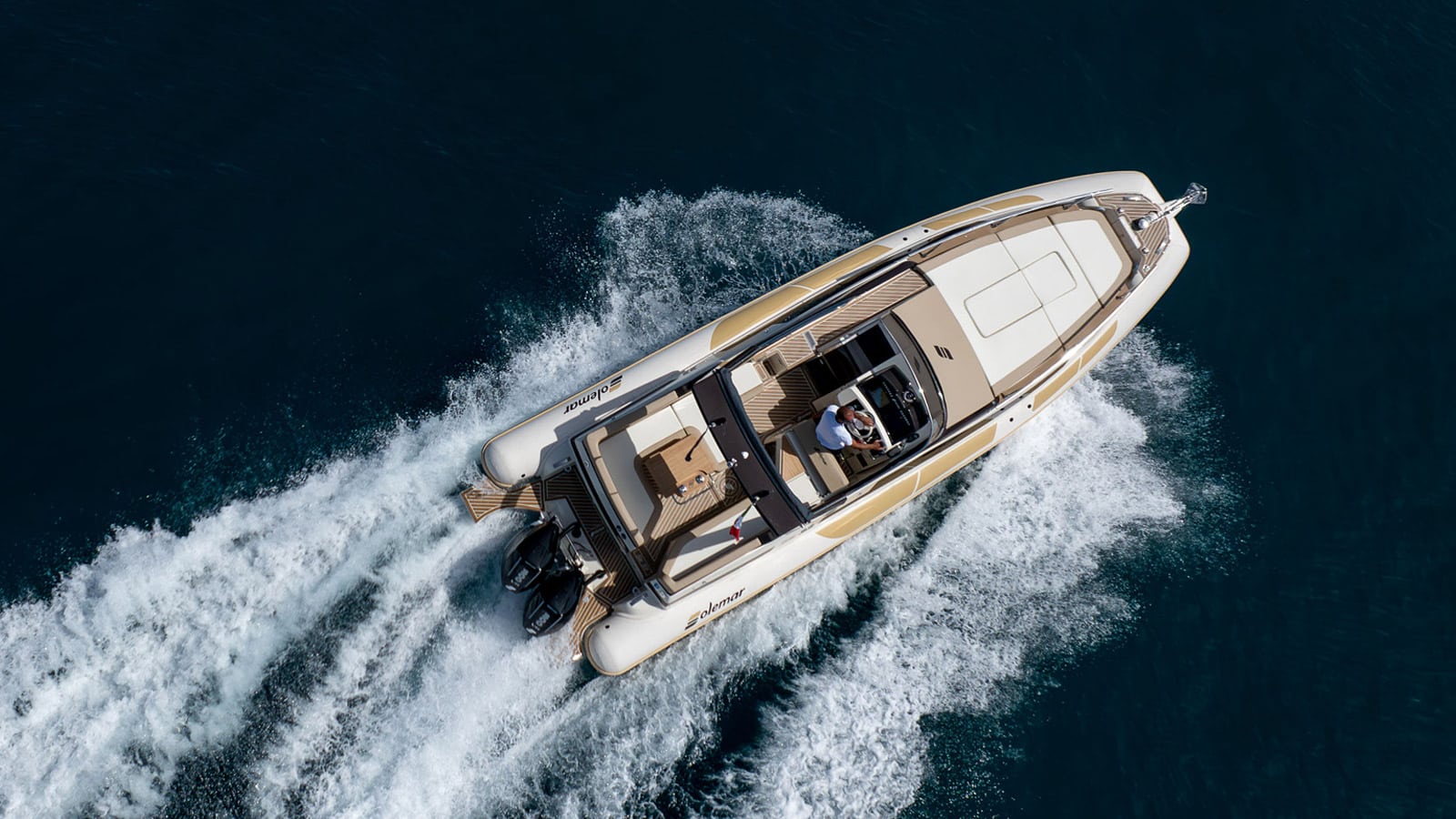
Official debut for the Solemar SE line: SE33 is the RIB we’ve all been dreaming of
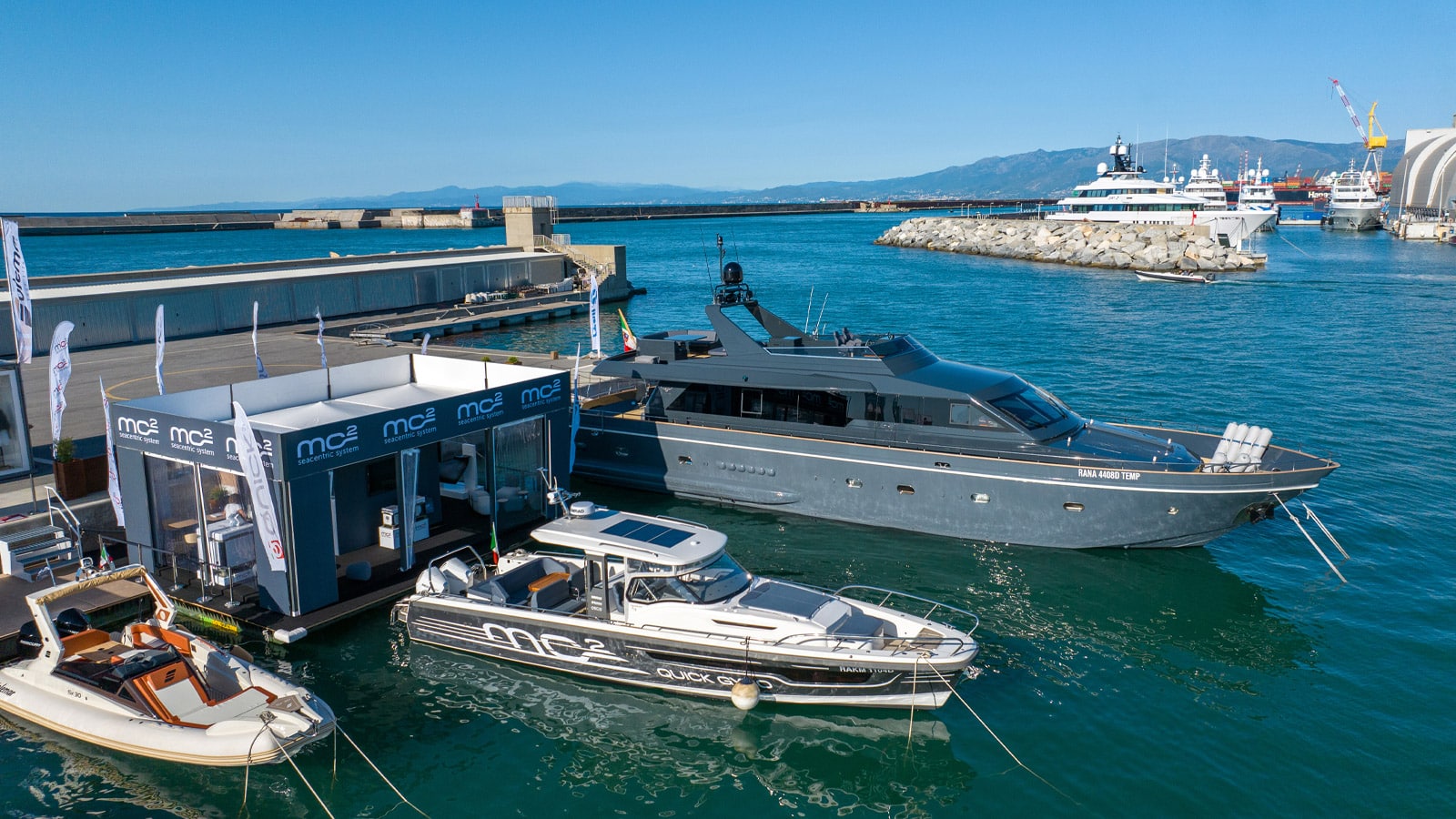
Quick Group at September boat shows with great innovations for the superyacht segment
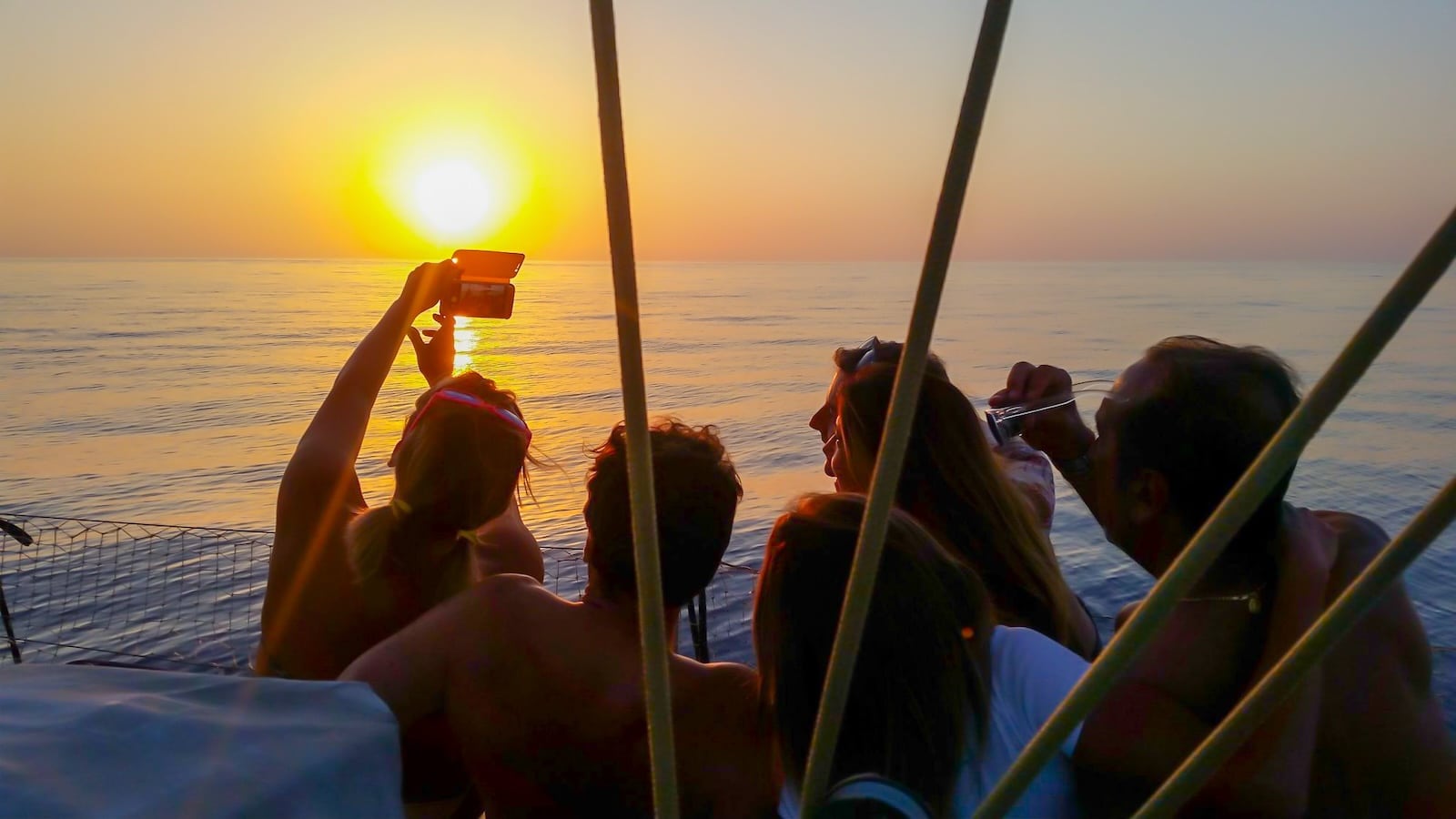
Sailboat charter: 8 considerations before booking
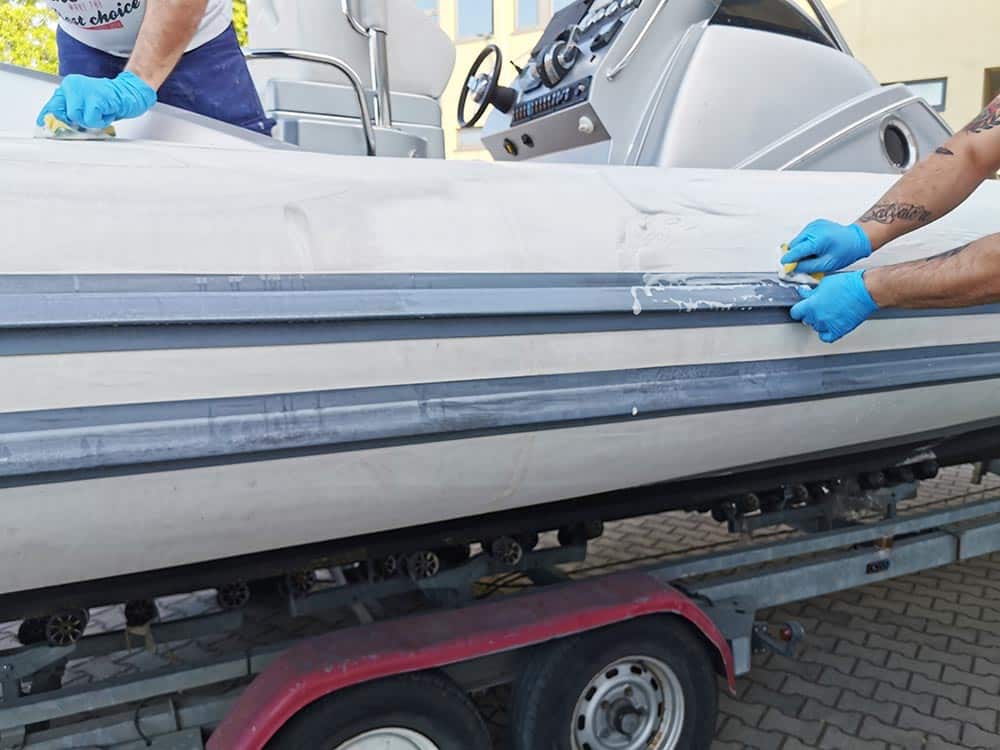
Guide to RIB Tubes Maintenance

© 2021 – THE INTERNATIONAL YACHTING MEDIA Designed by BLive Communication
ABOUT YACHTINGNEWS.COM
Yachting News is an interactive multimedia magazine dedicated to the world of boating.
The International Yachting Media is the worlds most widely read boating magazines network. Whit its portal It broadcast its original contents in five languages and in more than 200 countries developing 950,000 views a week. Our web portals are the main source of information for yacht and boat owners, the place where they can find anything about their boating passion.
THEINTERNATIONALYACHTINGMEDIA.COM | SUPERYACHTS.NEWS | YACHT DIGEST
VIRTUAL BOAT SHOW | TUTTTOBARCHE | TOUSLESBATEAUX | TODOSLOSBARCOS
BOATING NEWS FREE APP

To provide the best experiences, we and our partners use technologies like cookies to store and/or access device information. Consenting to these technologies will allow us and our partners to process personal data such as browsing behavior or unique IDs on this site and show (non-) personalized ads. Not consenting or withdrawing consent, may adversely affect certain features and functions.
Click below to consent to the above or make granular choices. Your choices will be applied to this site only. You can change your settings at any time, including withdrawing your consent, by using the toggles on the Cookie Policy, or by clicking on the manage consent button at the bottom of the screen.
Subscribe For Latest Updates
Sign up to receive the best of Yachting News, sea trials, boat review and world premieres .
The only ADVERTISING FREE newsletter
Free Shipping in the US on Orders $75+

Item added to your cart
The complete list of trimarans.
There is no single trimaran that is best for everyone. Where some prefer luxury cruisers for long trips with family and friends, others might opt for a high performance racing tri for thrilling rides at breakneck speeds. With the recent spike in trimaran popularity, these days there is a perfect tri for every sailor. So to help prospective trimaran owners decide which boat is just right for them, we here at WindRider have put together a comprehensive list of the best trimarans on the market today! Read through for simple at-a-glance trimaran comparisons of boats both big and small, exhilarating and relaxing, and for all price points.
Jump to a specific sailing trimaran: Neel Weta Corsair WindRider Dragonfly Catri Astus Hobie Sea Pearl Farrier Sea Cart Multi 23 Triak SeaRail Warren Lightcraft Diam Radikal Challenger

Known for their award-winning luxury trimarans, NEEL is based in La Rochelle, the capital city of sailing in France. NEEL trimarans are built for fast cruising with an average cruising speed of about 10 knots, and are even configured to facilitate that sustained speed under motor propulsion. The NEEL 45 was notably named Cruising World’s Most Innovative Vessel in 2013, and by all accounts is an easy-to-sail, high performance boat that is just plain fun.
At a glance:
Models: NEEL 45, 65
Length: 45’ – 65’
Cost: $$$$$
Use: Luxury cruiser

A fan favorite, Weta trimarans are fast, stable, and remarkably easy to rig. This single-sailor tri has a capacity of up to three, and the ease with which it can be transported and stored makes this a great, versatile boat for beginners. The Weta was named Sailing World’s 2010 Boat of the Year, and one ride is enough to know why: simply put, the Weta is an absolute ton of fun to sail regardless of skill level.
Models: Weta
Length: 14’5”
Cost: $$ $$$

The high-end Corsair trimaran definitely holds its own in the categories of versatility, performance, and convenience. Boasting a rigging time of 30 minutes from trailer to sailor , the Corsair 42 – whose convenient folding amas makes trailering possible – is a simple option even for single sailors, though cabin space is suitable for two adults. These boats are wicked fast, capable of reaching speeds of 20+ knots, and were made for skilled sailors seeking solid construction and high performance vessels, not for beginners.
Models: Pulse 600, Sprint 750 MKII, Dash 750 MKII, Corsair 28, Cruze 970, Corsair 37, Corsair 42
Length: 19’8” – 37’
Cost: $$$$ $
Use: Sports cruisers

Built for the sailor who wants to maximize the joys of sailing while minimizing any hassle, WindRider trimarans are notoriously fast, very safe, and a blast to sail from start to finish. With several models that can hold between 1 and 6 riders, including adaptive designs to allow participation from sailors of all levels of mobility, there’s something to suit every sailor’s needs. The WindRider 17, an exhilarating ride perfect for families or camper sailors, has been known to reach speeds of up to 20mph. This easy day sailor goes from trailer to sailing in under 30 minutes and is sure to fit in perfectly with whatever adventures you have planned.
Models: WR 16, 17, Tango, Rave V
Length: 10’11” – 18’3”
Cost: $ $$$$
Use: Day sailor

The Danish-built Dragonfly trimarans come in a variety of models ranging from 25’ – 35’, all known for their spry performance, comfortable ride, and ease of use. Every model comes equipped with the unique “SwingWing” feature, a motorized system that can unfold the amas even while the boat is already underway – making it accessible to marinas and slips, and even makes trailering possible. Perfect for those who don’t want to sacrifice their comfort for high performance, the Dragonfly can breeze along at 13 knots while remaining one of the quietest compact cruisers out there.
Models: Dragonfly 25, 28, 32, 35, 1200
Length: 25’ – 39’

Designed for both safe cruising as well as for high speed racing, Catri trimarans will make your day. Especially noteworthy is the Catri 25, a stable yet wildly fast foiling trimaran with accommodations for up to 6 people. With profiles optimized for speeds of 25+ knots when foiling, this is no beginner’s sailboat. The special attention paid to stability in the foil design allows the Catri to be a single sailor vessel, even at foiling speed, with no special physical abilities. Whether you’re taking a small crew for longer rides at shuddering speeds or bringing the whole family along for a shorter, but still thrilling sail, the Catri is truly one of a kind.
Models: Catri 25
Length: 25’
Use: Cruiser/racer

A popular brand of trimaran in Europe, Astus has recently made its way to the US market to the delight of sailors on this side of the pond. Designed to offer maximum pleasure with minimum hassle, all models of Astus trimarans are fast to set up, quick on the water, inherently stable, and always a joy to sail. Their outriggers are mounted on telescopic tubes for easy stowage and towing, and can even be extended and retracted on the water for access to narrow passageways and monohull slips in marinas. With models in all sizes and price points, Astus trimarans are a great option for any sailor.
Models: Astus 16.5, 18.2, 20.2, 22, 24
Cabin: Some models
Length: 16’ – 24’
Use: Sport cruisers
HOBIE ADVENTURE ISLAND

Great for beginners and adventurers alike, the Hobie Mirage Adventure Island series is nothing if not just plain fun. With the option to use as a kayak or as a very basic trimaran, the Hobie is transportable, versatile, unintimidating, lightweight, and wonderfully affordable. The pedal system known as “Mirage Drive” allows a person to pedal the kayak using their legs for an extra kick of movement in slow winds. Amas tuck close to the main hull for docking or car-topping, adding serious ease and convenience to the exhilarating experience of the Hobie.
Models: Hobie Mirage Adventure Island, Mirage Tandem Island
Length: 16’7” – 18’6”
Use: Convertible kayak/trimarans

Best known for its use in camp cruising excursions, the Sea Pearl offers a roomy main hull and particular ability to sail in very shallow waters, making beaching and launching a breeze. The lightweight Sea Pearl trimaran is easy to tow, and the larger-than-expected cabin opens this vessel up for overnight adventures with plenty of storage space. The simple design makes the Sea Pearl notoriously low maintenance, and the ease it takes to rig and sail it add to the overall delight of owning this boat.
Models: Sea Pearl
Length: 21’
Use: Camper cruiser

Quick, lightweight, roomy, and trailerable, Farrier trimarans are made for versatility to fit every sailor’s needs. Different Farrier models are available in plan or kit boat form for those who appreciate building their boat themselves, but of course, also as the full production sail-away boat for the rest of us. Single-handed rigging and launching takes under 10 minutes from start to finish, minimizing hassle and getting you on the water fast. All non-racing Farrier designs use a minimum wind capsize speed of 30 knots or more to ensure safety for all those aboard. Add the roomy cabin and high speed capabilities to the equation and you’ve got a boat that is great fun for everyone.
Models: F-22, 24, 25, 82, 27, 28, 31, 9A, 9AX, 9R, 32, 33, 33R, 33ST, 36, 39, 41, 44R
Length: 23’ – 39’4”
Cost: $$$ $$
Use: Sport cruisers/racers

One of the biggest names in the game, SeaCart is internationally noted for its high performance trimarans that far exceed expectations for a production boat of its size. The SeaCart trimaran performs as brilliantly off the water as it does on with its super-light and efficient harbor folding system, making light work of trailering. Notoriously easy to manage and maintain, the SeaCart 26 One Design is the ultimate day racing trimaran, designed for both course and inshore/coastal distance racing. Absolutely worth the international buzz it has garnered, the SeaCart is a thrill from beginning to end.
Models: SeaCart 26
Length: 26’

A high performance racer class, the Multi 23 is a lightweight, powerful trimaran known for its wicked speed of up to 25 knots. Multi trimarans of both available configurations were designed to give beach cat thrills and speed without any of the stability or seaworthy concerns. Open ocean sailing is no issue for the Multi’s big bows, which do their job to keep her stable. Built for sailors with a need for speed, the Multi makes a perfect weekend boat for racers, especially those with a taste for boat camping.
Models: Multi 23
Length: 23’

Another dual outrigger sailing kayak/canoe design, the Triak trimaran was designed to be effortless and fun, especially for beginners. Paddle the kayak with sails furled, use the foot pedals for an extra kick of momentum, or sail with just the mainsail – the only boat in its class to feature an asymmetrical spinnaker – for exhilarating speeds and a blast on the water. Car-top the Triak anywhere for a quick sail or plan for a week long expedition, but always count on having a great time on this easy little boat.
Models: Triak
Length: 18’
Use: Convertible kayak/trimaran

SeaRail trimarans are known for being affordable, light weight, trailerable trimarans that offer the perfect combination of exciting and relaxing experiences to a wide range of sailors. Whether it’s day sailing with your family, resort or camper sailing, SeaRail trimarans are ideal leisure vessels. Leave the hassle to the other boats – the SeaRail takes you from trailer to sailor in 15 minutes. But don’t let its reputation as a leisure tri fool you: if speed is what you want, rest assured that the SeaRail can deliver that as well.
Models: SeaRail 19
WARREN LIGHTCRAFT

Warren Lightcraft trimarans , another example of a convertible kayak-to-sailboat option, are known for their aesthetically pleasing designs that are also, as the name implies, very light for simple transportation and ease of use. Convert the kayak into a fast, high performance sailboat in just minutes, fly around on the waves all day long, then simply car-top the 68lb Warren for a maximum enjoyment, low-hassle day on the water. Perfect for sailors and paddlers of all skill levels, the Warren Lightcraft is the best of both worlds and an absolute joy to sail.
Models: Warren Lightcraft
Length: 15’6”

Built strictly with racing in mind, the Diam 24 is a light, powerful one-design class trimaran and a notoriously exceptional performer. Boasting blistering speeds of up to 30 knots, Diam trimarans are not intended for beginners. For racers who crave the very best in terms of intense speeds, smooth handling and impeccable performance, the Diam is the red-hot one-design racing tri for you.
Models: Diam 24
Length: 24’

For the sailor who prefers the finer things in life, the Radikal 26 delivers. Perfect for bringing the whole family out for a day on the water, this high performance, trailerable sailing trimaran strikes the most luxurious balance between quicksilver speeds and a smooth, comfortable ride. The Radikal 26 trimaran is as convenient to transport and set up as it is pleasant to sail, with a folding system that minimizes rigging hassle and also makes this a trailerable tri. Built for a fast and comfortable sail rather than a hold-onto-your-seats thrill, one-the-water safety and overall pleasure makes the Radikal 26 what it is.
Models: Radikal 26
Use: Sport cruiser

A solidly-built, single-handed trimaran, the Challenger also doubles as an adaptive design – meaning it is made to accommodate sailors of all levels of physical mobility. Best suited to lakes, the Challenger is a very safe, seaworthy boat for sailors of all ages and experience levels. Add to this the ease of owning, transporting and maintaining the Challenger trimaran and what you get is a simple, fun sailboat perfect both for beginners and those seeking a cheap thrill alike.
Models: Challenger
At a glance comparison:
| Astus 16.5, 18.2, 20.2, 22, 24 | 16’ – 24’ | Sport cruiser | Some models | ||
| Catri 25 | 25’ | Cruiser/racer | Y | ||
| Challenger | - | Day sailor | N | ||
| Pulse 600, Sprint 750 MKII, Dash 750 MKII, Cruze 970, Corsair 28, 37, 42 | 19’8” – 37’ | Sport cruisers | Y | ||
| Diam 24 | 24’ | Racer | N | ||
| Dragonfly 25, 28, 32, 35, 1200 | 25’ – 39’ | Luxury cruiser | Y | ||
| F-22, 24, 25, 82, 27, 28, 31, 9A, 9AX, 9R, 32, 33, 33R, 33ST, 36, 39, 41, 44R | 23’ – 39’ 4” | Sport cruisers/racers | Y | ||
| Mirage Island, Mirage Tandem Island | 16’7” – 18’6” | Convertible kayak/trimarans | N | ||
| Multi 23 | 22’ | Racer | Y | ||
| NEEL 45, 65 | 44’ – 65’ | Luxury cruiser | Y | ||
| Radikal 26 | 26’ | Sport cruiser | Y | ||
| Sea Pearl | 21’ | Camper cruiser | Y | ||
| SeaCart 26 | 26’ | Racer | Y | ||
| SeaRail 19 | 18’ | Day sailor | N | ||
| Triak | 18’ | Convertible kayak/trimaran | N | ||
| Warren Lightcraft | 15’6” | Convertible kayak/trimaran | N | ||
| Weta | 14’5” | Racer | N | ||
| WR 16, 17, Tango, Rave V | 10’11” – 18’3” | Day sailor | N |
Did we miss one? Let us know. Tell us what you sail and what you like about each boat in the comments below.
- Choosing a selection results in a full page refresh.
- Opens in a new window.
TRIMARAN SUPER YACHT - The largest in the world
The largest tri-hull in the world - us$100 million .
At 84m (276ft) the White Rabbit Golf Trimaran Super Yacht is valued at US$100 million and is the largest tri-hull in the world The Singaporean owner, Goh Cheng Liang, aged 91, has owned several yachts all called White Rabbit.
1989 - White Rabbit Alpha (White Rabbit A) 1995 – White Rabbit Bravo (White Rabbit B) 2001 – White Rabbit Charlie (White Rabbit C) 2006 – White Rabbit Echo (White Rabbit E) 2017 – White Rabbit Golf (White Rabbit G) And finally, Charley, which, at 46m is a purpose-built shadow vessel to support White Rabbit Golf in all its voyages!
This inspiring rags-to-riches man was sent to Malaya in his early teens, when World War II broke out, to help his brother-in-law sell fishing nets. After returning to Singapore, he worked in a hardware store for four-and-a-half years. Later, in 1949, war supplies were auctioned off by the British Army, and Goh bought “rotten paint” for cheap. Armed with his paint and a Chinese dictionary on chemicals, he started experimenting by adding solvents and mixing colours, and eventually created his own brand of Pigeon Brand paints. Then, the following year, when the Korean War began and imports were severely restricted, Goh’s business boomed!
Goh is the founder of the South East Asia paint business and owns 39% shares of Nippon Paint. His net worth is estimated at $8 billion and in 2015 he was reported by Bloomberg to be the richest man in Singapore. Hup Jin, Goh’s son, is the chairman of Nippon Paint.
Goh Foundation
Goh is also the founder of Wuthelam Holdings which now has interests in the paint business and property development, amongst other things, and his Goh Foundation has made large donations to the National Cancer Centre in Singapore, and several other charitable causes.
Designed by Sam Sorgiovanni, Goh’s latest trimaran, also known as White Rabbit G (WRG) is the largest tri-hull and largest aluminum superyacht in the world at 84m! She is also the largest superyacht to be built in Australia. She now sits in her home port at Keppel Bay in Singapore, a beautiful spot overlooking the spectacular structure of the Reflections residential towers on the southern shores.
When stood beside the WRG, you just cannot grasp the sheer beauty of her. We had to take ‘pano’ shots just to get her all in. After walking the length of the breakwater, you see the breathtaking beauty of the tri-hull head-on. And what a majestic sight, like tunnels to heaven. The smaller yacht, White Rabbit E (WRE) is 64m but looks tiny when next to the WRG! Unfortunately, it wasn’t in its berth today but even the neighbouring superyachts were completely over-shadowed by the WRG super structure!
Services Directory
Social media, © 2024 super yachting limited.
- BOAT OF THE YEAR
- Newsletters
- Sailboat Reviews
- Boating Safety
- Sails and Rigging
- Maintenance
- Sailing Totem
- Sailor & Galley
- Living Aboard
- Destinations
- Gear & Electronics
- Charter Resources
- Ultimate Boat Giveaway

2024 Boat of the Year: Best Performance Trimaran
- By Herb McCormick
- December 20, 2023
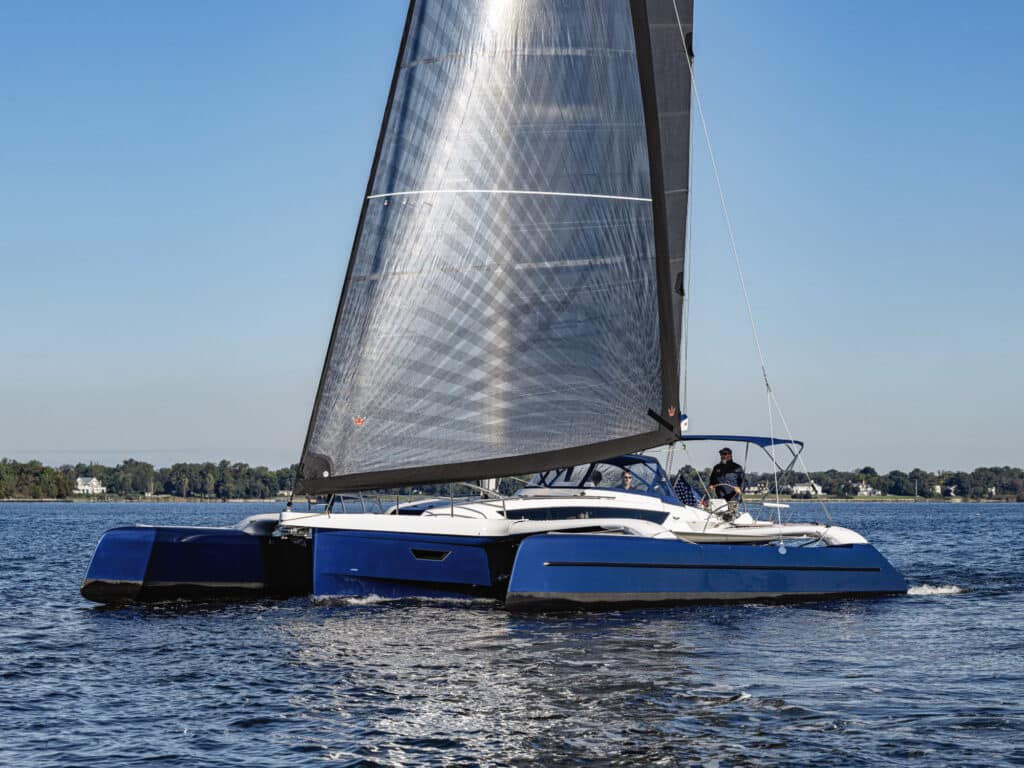
For the first time ever in the 29-year history of Boat of the Year , we’re introducing a new class to the proceedings: Performance Trimarans. To make things spicier, the two nominees not only shared the same length overall of 40 feet, but they also came in at the near-identical price point of around $800,000 for the base boat.
Beyond those two parameters, however, the different approaches from these disparate brands were interesting and exciting. Cruising trimarans, though rare, are nothing new; the well-established Neel line of French-built trimarans has enjoyed plenty of success in previous BOTY contests. With that said, the judging panel was champing at the bit to put these fresh three-hull whizzes through their paces. And once under sail, we were definitely not disappointed.
Winner: Dragonfly 40
Let’s cut right to the chase: The Dragonfly 40 had judge Tim Murphy swooning straight from hello: “This is an exquisite yacht in every detail. When you step aboard, the new-boat smell was not of styrene but of a wood shop. Built in Denmark by the Quorning family (designer and builder Jens Quorning took us on the test sail), it’s just a beautiful boat to look at from across the water. The wheel steering—no tiller here—was butter-smooth. Thanks to the boat’s extremely fine hulls, on our test sail we hardly felt any jerks or deceleration as we passed through several Severn River boat wakes. There were AGM batteries on this boat, but a lithium-battery system is an option. The kick-up centerboard and rudder are ingenious: Quorning as much as invited us to ground the boat on a shoal. From barber haulers to boom preventers, it’s full of great sailing details.”
Judge Mark Pillsbury was equally impressed: “As we finished up our all-too-brief sea trial aboard the Dragonfly 40, I scribbled ‘Top shelf!!!’ in my notebook. We had the benefit of sailing the boat with its thoroughly detail-oriented builder, who pointed to the seemingly endless features he’d employed to make this maybe the most memorable sailing boat of the year. At one point, I looked down at the GPS speed-over-ground number, which read 6 knots, then glanced at the true wind gauge: 5.2! Faster than the wind! The interior of the Dragonfly was elegant, with the furniture rendered in elm—not a wood we often see. But most impressive was the walk-in aft cabin instead of the crawl-in bunk often found in the narrow confines of a tri’s slender center hull.”
Judge Herb McCormick was as astonished as his colleagues: “There isn’t a thing on the Dragonfly that Quorning hasn’t thought long and hard about, and then executed to a stellar degree. Take that centerboard arrangement, which is built into the central dining table and is integrated so well into the interior that it’s a functional piece of furniture as well as a foolproof cruising solution. What else can we say? It’s a magnificent freaking boat.”
Runner-up: Rapido Trimarans 40
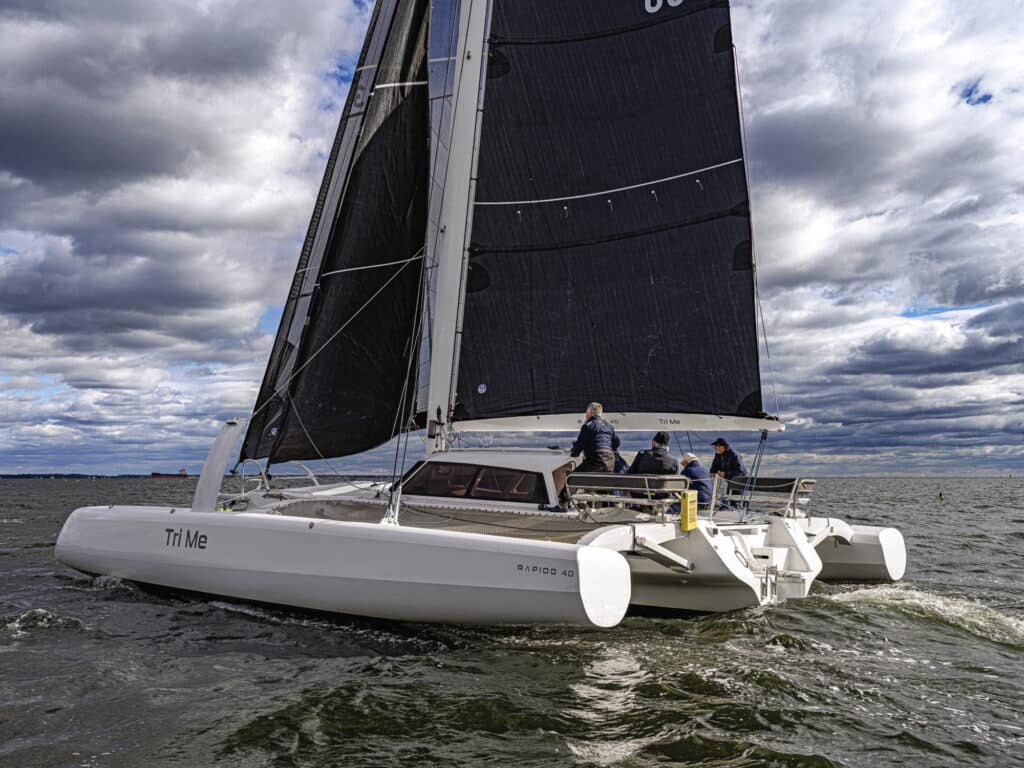
The design brief for the Rapido 40 is straightforward: fast cruising and racing for a couple or crew; ocean-ready but able to sail and moor in shallow water. Nobody was more psyched to sail the boat than judge Herb McCormick, who was not disappointed.
“I was first exposed to the brand at a multihull regatta in the Caribbean, where a larger Rapido 50 was in attendance,” he said. “I was on another boat, and we spent a lot of time looking at the Rapido’s transom. Then I stepped aboard the Rapido 40 for our trials and was handed the tiller extension; under the code zero, in about 15 seconds, we were making 14 knots. Whoa!”
Judge Mark Pillsbury said: “From stem to stern, the Rapido 40 came packed with features, including a double-taper carbon rotating mast, a Park Avenue-style boom for easy sail handling, daggerboards for upwind performance, and a very comfy cockpit. There’s an optional all-carbon version of the boat, including the drawers in the galley. The layout, with a comfortable V-berth and raised table in the salon—offering outstanding views of the great outdoors—is cruising-couple friendly.”
Judge Tim Murphy added: “The Rapido 40 is built in Vietnam by Paul Koch, the previous owner of Corsair Marine who started Rapido Trimarans in 2014. Rapido builds three models, all designed by the renowned team of Morrelli & Melvin. Our test boat had the standard infused construction, which is mostly E-glass with vinylester resin and a PVC core. There’s also carbon fiber near the bulkheads where the crossbeams meet. Carbon-fiber C-foils in the amas are intriguing and provide lift in two directions: up (to reduce sailing displacement but not fly) and to windward. Sailing the boat on the raised web seat with the tiller extension is gorgeous. It feels very sporty. Rapido’s latest claim to fame: The YouTube channel Sailing La Vagabonde has taken delivery of a Rapido 60, which will definitely raise the profile of the brand.”
- More: 2024 Boat of the Year , multihull , Print January 2024 , Sailboats
- More Sailboats

Sailboat Preview: Elan GT6 Explorer

For Sale: 1984 Camper & Nicholsons 58

Alubat Updates OVNI Models

For Sale: Little Harbor 63 Ketch

From Paradise to Medical Emergency: A Bahamas Nightmare Turns Lesson Learned

Free Medical Advice: The Unwarranted, Unprofessional Edition

Gatekeepers of the Waterway

Rigging Redo: Our Switch to Synthetic
- Digital Edition
- Customer Service
- Privacy Policy
- Terms of Use
- Email Newsletters
- Cruising World
- Sailing World
- Salt Water Sportsman
- Sport Fishing
- Wakeboarding
Yachting Monthly
- Digital edition

Astus 20.5: Fast, fun and affordable trailable trimaran
- David Harding
- August 20, 2021
For fast yet undemanding sailing, easy trailing and simple camper-cruising, the Astus 20.5 trimaran is likely to find wide appeal says David Harding

The Astus 20.5 is taut and responsive to sail. Credit: David Harding
Product Overview
- Fast and easy to sail
- Can be trailed behind a small car
- Easy to reduce beam for marina berthing
- Less accommodation than a monohull of similar size
- Rigging process could be simplified
- Slightly stark interior finish
Manufacturer:
Price as reviewed:.
Boats that are small and light enough to keep in your driveway and trail to where you want to sail make a lot of sense.
One drawback, however, is that they tend to be slower than bigger boats – especially if they’re of a size and weight that allows them to be easily managed short-hand, both afloat and ashore.
If you want to sail from Poole to Weymouth for the weekend in a 20ft trailer-sailer, for example, it might take a while.
This is where speedy trailable trimarans like the Astus 20.5 come in.
When I sailed its predecessor, the 20.2, about 10 years ago, we regularly hit 15 knots on a reach without breaking sweat and maintained an easy 6.5 knots upwind.

This 20 footer can match 50 footers for speed. Credit: David Harding
You can cover a lot of ground at those sorts of speeds.
I first met the Astus 20.5 at the Düsseldorf Boat Show in 2019. Since it’s a newer boat and designed by no less a design team than VPLP, I had high hopes that it would offer even more than the 20.2.
Quite apart from the sailing potential, the trailing is as simple as can be with a boat like this.
If you choose the resin-infused hull, the Astus 20.5 weighs under 500kg (1,100lb), or just over 500kg with the standard solid laminate.
The lighter weight means you can use an unbraked trailer , saving money, maintenance and yet more weight, so you can trail it behind a normal hatchback vehicle.
Getting somewhere fast under sail is one thing. Having somewhere to sleep when you arrive is another.

The Astus 20.5 is simple to sail for two people. Credit: David Harding
Though its cabin is smaller than on a monohull of similar size, the Astus provides seating, stowage and space for a companionable couple to be able to stretch out.
Then of course you have the trampolines each side on which you can rig a tent for more sleeping space.
The opportunity for a sail on the Astus 20.5 finally came when Hein Kuiper of Boats On Wheels brought his first demonstrator to the UK.
In fact we went out twice – first for a photo session in Poole on a brisk winter’s day and then a few months later in Chichester Harbour.
Since the boat arrived in Poole on its trailer, I was able to see how it went together.
Pulling out the hulls is pretty straightforward: their aluminium beams slide in and out of the fixed beams on the main hull. You can do that ashore or afloat.
There’s nothing complicated about raising the rig, either, and it can all be done singlehanded .
The whole process, from arriving with the trailer to sliding the boat into the water, took Hein a couple of hours or so the first time or two (comparable with a monohull of similar size, he reckons) but would undoubtedly get quicker with practice.
Continues below…
Video: Trailer sailing made easy
Not even Alex Thompson aboard his Hugo Boss rocket ship can sail to windward at 60 miles an hour. As…

Coast 250: The mighty micro cruiser
Producing a boat that planes under power and sails like a thoroughbred has been an elusive quest for decades. Has…

Dragonfly 28 Sport
Whether you choose the standard or the Sport version, the mast is the same height.
The difference is that the latter comes with a square-top mainsail to give appreciably more sail area.
If you want to save as much weight as possible and make raising and lowering the mast easier, you can have it in carbon. A wing mast is another option.
The rig and hardware don’t appear to be modified in any way as a concession to the boat’s trailer-sailer nature.
Here and there, the odd ready-made loop or strop would save fiddling around with bits of line.

It is basic down below but there’s seating and sleeping space for two people. Credit: David Harding
All that is forgotten as soon as you’re under way.
On our second outing, once the electric outboard had pushed us out of Northney Marina – where the boat proved to be surprisingly manoeuvrable with the centreplate fully down – we headed off on a beam reach at 12.5 knots in 12-15 knots of wind.
In most boats, 12.5 knots would be going some. In this 20-footer, it felt perfectly relaxed.
Over the course of the following couple of hours we covered every point of sail including, of course, reaching under spinnaker.
With the gusts rarely exceeding 16 knots in the flat water of the harbour, we didn’t quite manage to break 15 knots.
It wasn’t a bad speed-to-effort ratio nonetheless.
The boat felt rock solid the whole time, and I knew from the photo session in Poole that she could carry the kite on a beam reach in appreciably more wind than we had in Chichester.

It is easy to reduce the beam of the Astus 20.5 for marina berthing. Credit: David Harding
It’s hard to imagine that 20 knots wouldn’t be perfectly achievable.
Upwind we maintained between 7 and 8.5 knots most of the time.
As you would expect, you need to keep the bow down a little to maintain full power.
You also need the purchase of the 6:1 mainsheet to maintain sufficient tension in the upper leech. It makes a big difference.

You won’t need more than two people to go out and have fun on the Astus 20.5. Credit: David Harding
Tacking was pretty positive provided we had adequate boatspeed going into the tack, and leeway appeared minimal.
All told the Astus 20.5 was great fun to sail and easy to manage two-handed.
There was little for a third person to do except enjoy the ride or contribute to the righting moment by joining the helmsman on the windward trampoline.
If you were racing, you could use a longer tiller extension and fit toe-straps to maximise the advantage.
Beating our way back up the harbour, we demonstrated the windward ability of the Astus 20.5 by sailing straight past a 15m (49ft) monohull.
Creature comforts aboard the Astus 20.5

David Harding has been testing boats for decades and is also a sailing photographer
Above decks the Astus offers a vast amount of sitting and lounging space thanks to the trampolines.
Down below, the hull’s narrow beam makes things cosy but you still find a seat either side, space for a chemical toilet under the aft end of the berth and a fair amount of stowage beneath and to either side of the companionway.
The centreboard is offset to port to leave the middle of the boat clear.
The finish is simple and uncomplicated, largely to save weight. There would be plenty of scope to fit a slide-out galley and devise lightweight stowage solutions to make better use of the space.
Astus 20.5: the test verdict
More than anything else, this boat is tremendous fun.
She feels taut and responsive to sail. I found that it took an hour or so to begin to find her sweet spots, but after that she just makes you want to sail her.
She inspires confidence and is easy to handle, too. In most conditions you could manage perfectly well single-handed and for cruising you won’t need more than two.

The Astus 20.5 has less accommodation than a monohull of similar size
Then there’s the speed. No matter whether or not you’re in a hurry to get anywhere, it’s easier to slow down in a fast boat than to speed up in a slow one.
Speed is fun in itself, and it’s hard not to enjoy sailing straight past a monohull more than twice your length.
Niggles are relatively few.
I thought the rudder blade could do with a touch more balance and I wasn’t sure that the fixed end of the 2:1 jib sheet was quite far enough aft on deck.
Other than that, it all works.
Hardware is mostly from Harken and the spars are by Sélden, so there’s no skimping in these departments.
Would she suit you and your crew?
The Astus 20.5 will attract attention. Several people stopped for a chat and to admire her back in Northney having seen her on the water.
If you’re a dinghy sailor moving up but not ready to slow down, this is a good choice.
Just as much interest is coming from big-boat sailors moving down or wanting a second, smaller boat that still has a good cruising range. Few boats of this size go so fast with so little effort.

The Astus 20.5 is ideal for exploring harbours, estuaries and rivers
As for the inevitable monohull-versus-multihull debate, there are trailable, family-friendly boats of this size with one hull that sail very nicely.
I have clocked over 12 knots in one or two, but only under spinnaker, with good sailors on board and not for sustained periods.
As long as you’re prepared to accept that sailing regularly at double-figure speeds means sacrificing some interior volume, the Astus could suit you perfectly. And for exploring harbours and estuaries, camper-cruising and nudging into the beach, it’s absolutely ideal.
For all the latest from the sailing world, follow our social media channels Facebook, Twitter and Instagram .
Have you thought about taking out a subscription to Yachting Monthly magazine?
Subscriptions are available in both print and digital editions through our official online shop Magazines Direct and all postage and delivery costs are included.
- Yachting Monthly is packed with all the information you need to help you get the most from your time on the water.
- Take your seamanship to the next level with tips, advice and skills from our expert skippers and sailors
- Impartial in-depth reviews of the latest yachts and equipment will ensure you buy the best whatever your budget
- If you are looking to cruise away with friends Yachting Monthly will give you plenty of ideas of where to sail and anchor

COMMENTS
He has almost single-handedly proven the concept in big boats and now owns the world's two biggest trimaran superyachts: the original three-hulled 61-metre White Rabbit from 2005 and now this 84-metre version, delivered just in time for Christmas. There's also a large catamaran in the fleet, a 51-metre support vessel called Charley.
The Biggest Cruising Sailing Trimaran in the World. The world premier presentation of a giant trimaran, a project by Monegasque company UltraLuxum, was recently done at Monaco Yacht Show (21 to 24 September 2011). Constructed in carbon fiber and fitted with retractable floats, the UltraLuxum CXL harnesses the very best of 21st-century technology.
The 84 metre White Rabbit was launched in 2018, becoming the world's largest trimaran. The multihull superyacht is the fifth in a series of White Rabbits and follows two Feadship monohulls, a 36-metre catamaran built by Austal and a 61-metre trimaran built by North West Bay Ships. The owners loved their 61-metre White Rabbit but were looking ...
Trimarans such as 84m/275.6ft luxury yacht WHITE RABBIT are a rarity within the luxury yachting industry, however the benefits of multiple hulls have been well recorded, providing greater stability and with top quality contemporary naval architecture, a smoother cruising experience with reduced noise and less of an environmental impact.
Cruising World Judges named the Neel 47 trimaran the Best Full-Size Multihull for 2020. In the large multihull class, at least for 2020, the Neel 47 proved that three hulls are better than two. The Eagle Class 53 was easily the most unique boat in the long history of Boat of the Year. Jon Whittle. It's hard to imagine three vessels, in a ...
The Prout Trimaran 138' is designed and constructed as an all-composite shallow draft sailing trimaran with a 46 ft beam with a very small draft of only 1.52 m. The hull and deck are to be constructed utilizing Prout International's mold and when the Prout PT 138 is launched it will be the largest sailing trimaran in the world.
The Dragonfly 40 Ultimate is a work of art inside and out, and when the sails are up, this tri flies. By Dave Reed. December 20, 2023. The craftsmanship and performance of Dragonfly's flagship ...
The Prout PT-138-02 was infused in early March and construction on both of the world largest sailing trimaran yachts continues. Prout International starts construction of second Prout PT 138 The World's largest sailing trimaran. After weeks of preparation, it took only 3 hours for the PT-138 hull 02 to be completely infused. ...
An extraordinary trimaran. Launched in 2008, the largest racing trimaran ever built joined the Sails of Change (previously Spindrift) fleet in 2013, having secured the round the world record in the hands of Loïck Peyron and his crew of 13 sailors. ... Designed for crewed sailing, the maxi-trimaran was converted to a solo configuration in 2014 ...
The 138 feet trimaran will offer a 46 ft beam with a very small draft (only 1.52 m). The trimaran is intended to conduct extended offshore passages but can be also used for charter purposes. Specification of the Prout PT-138: LOA: 138 ft Beam: 46 ft Displacement: 32,767 kg Draft: 1.52 m Rigging and Sails: Mast Height: 43 m Mainsail 257 m 2 ...
The list of the top ten largest sailing yachts in the world is not easily disrupted. In fact, it had remained unchanged since the launch of the 106.7-metre Oceanco Black Pearl in 2018, which swiped the top spot from Lürssen's 93-metre Eos.For four years, Black Pearl remained the largest yacht in the world until early in 2023 when Oceanco sent a new flagship down the slipway, the mighty 127 ...
This trimaran retails for $595,000, making it a cheaper option than the Rapido 60. 5. Dragonfly 40. The Dragonfly 40 measures 40 feet (12 meters) in length. It features high-comfort standards, making it one of the best trimarans in the market for taking your family for a cruise.
Above: A 2023 NEEL 43 Trimaran Sailing Yacht underway. Photo by Olivier Blanchet / NEEL-Trimarans. We tested the NEEL 43 on the relatively flat waters of Chesapeake Bay in a healthy breeze of 18 to 22 knots. We found the key to powering up this model was the North Sails reacher on its top/down Facnor furler.
After three months of ambitious boatbuilding, the 40-meter trimaran Spindrift 2 was re-launched this month in Lorient, France. As the largest racing trimaran in the world, it has been optimised ...
The foldable sailing trimaran Marlin 33 has won the prestigious 'Best Multihull of 2022' award, the world's highest accolade for multihull sailing and motor boats. Awarded in recent days at the International Multihull Boat Show in La Grande Motte, France, the prize was consigned into the hands of the Marlin 33's designer, Dane Jan Andersen, at a special ceremony.
Neel 65 Evolution trimaran 2019, price is in the video, also some sailing footage.For more info about Neel trimarans http://www.neel-trimarans.com/Get the la...
One of the biggest names in the game, ... Perfect for bringing the whole family out for a day on the water, this high performance, trailerable sailing trimaran strikes the most luxurious balance between quicksilver speeds and a smooth, comfortable ride. The Radikal 26 trimaran is as convenient to transport and set up as it is pleasant to sail ...
Trimaran sail trim. One of the biggest differences between a cruising monohull and a multihull is how the mainsail is trimmed. Leech tension on a yacht is often largely controlled by the kicker and the backstay, while the mainsheet sheets the mainsail in and out, predominantly controlling the angle of the boom to the centreline, and there may be a short traveller.
The Largest Tri-Hull in the World - US$100 Million! At 84m (276ft) the White Rabbit Golf Trimaran Super Yacht is valued at US$100 million and is the largest tri-hull in the world. The Singaporean owner, Goh Cheng Liang, aged 91, has owned several yachts all called White Rabbit. 1989 - White Rabbit Alpha (White Rabbit A)
This article lists active sailing yachts of 110 feet (34 m) and upwards in length. This list features vessels with sails which were classed as yachts when they were launched as well as any vessels which were subsequently converted to operate with sails and re-classed as yachts. ... (largest trimaran) 40.00 m (131 ft) 23.00 m (75 ft) 5.8 m (19 ...
The cutting-edge Dragonfly 40 was designed with easy handling and short-handed sailing in mind. Add to that a spacious cockpit and a stylish, modern interior. Walter Cooper. For the first time ever in the 29-year history of Boat of the Year, we're introducing a new class to the proceedings: Performance Trimarans. To make things spicier, the ...
Below, we have selected ten of the world's largest power and sailing catamarans, which offer guests stylish and stable cruising experiences with oodles of space. World's Largest Power Cats 1. Hodor (Astilleros Armon) - 217 feet 2. Sunreef 49 Power Cat - 160 feet 3. Charley (Echo Yachts) - 150 feet 4. Moecca (Bannenberg & Rowell) - 148 feet 5.
The Astus 20.5 has less accommodation than a monohull of similar size. Then there's the speed. No matter whether or not you're in a hurry to get anywhere, it's easier to slow down in a fast boat than to speed up in a slow one. Speed is fun in itself, and it's hard not to enjoy sailing straight past a monohull more than twice your length.
The world's largest sailing cargo ship is making its maiden voyage across the Atlantic Ocean. It left a port in France in early August, and it is on track to deliver 1000 tonnes of cognac and ...
29 August to 8 September: Louis Vuitton Cup round-robin stage - all teams race each other twice, with the top four going through and the leading team choosing who they face in the semi-finals 14 ...